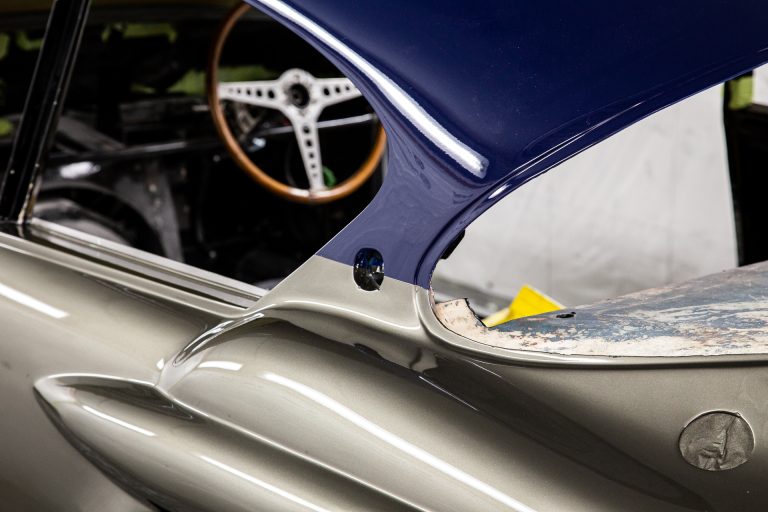
In Colour – Body of the 1958 Jensen 541R Painted
The 1958 Jensen 541R has been back into the Bridge Classic Cars in-house paint booth to have its body painted. The team began by getting


The 1958 Jensen 541R has been back into the Bridge Classic Cars in-house paint booth to have its body painted. The team began by getting
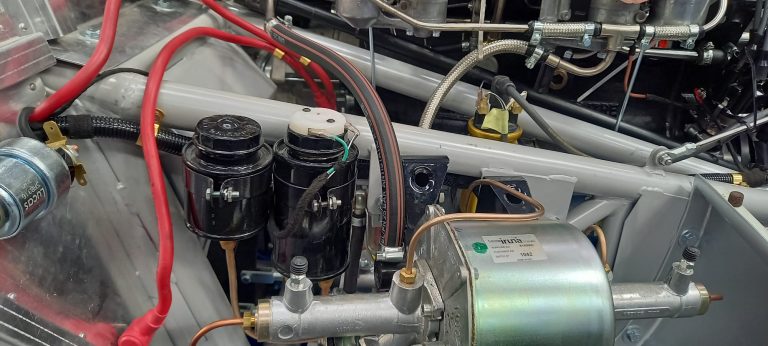
The workshop team at Bridge Classic Cars have been working on getting the plumbing fitted up in the engine bay of our 2022 Bridge C-Type
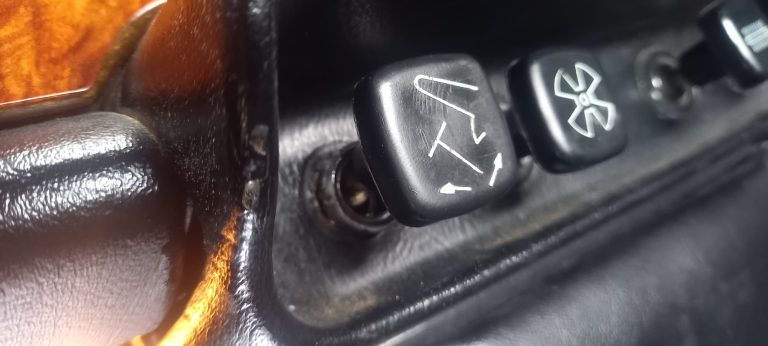
The technicians in the Bridge Classic Cars workshop have been working on getting the heater system working properly on the 1968 Triumph TR5. Jon found
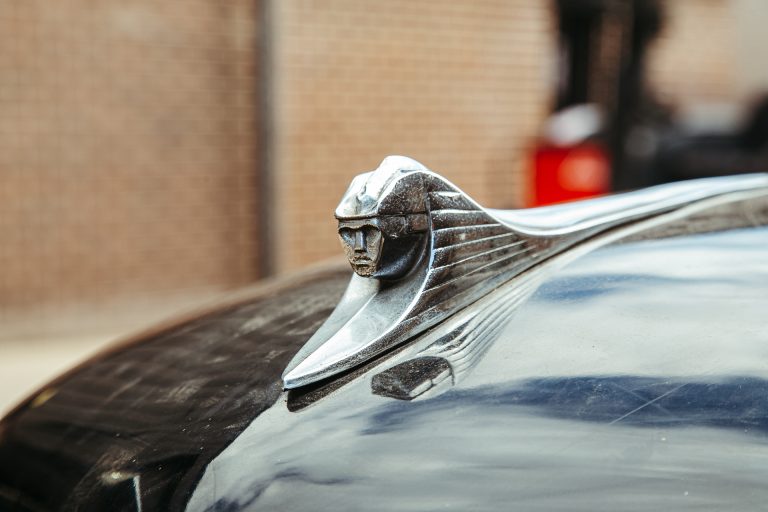
The latest arrival at the Bridge Classic Cars Suffolk HQ is this beautiful 1953 Armstrong Siddeley. The classic convertible has come in for our restoration
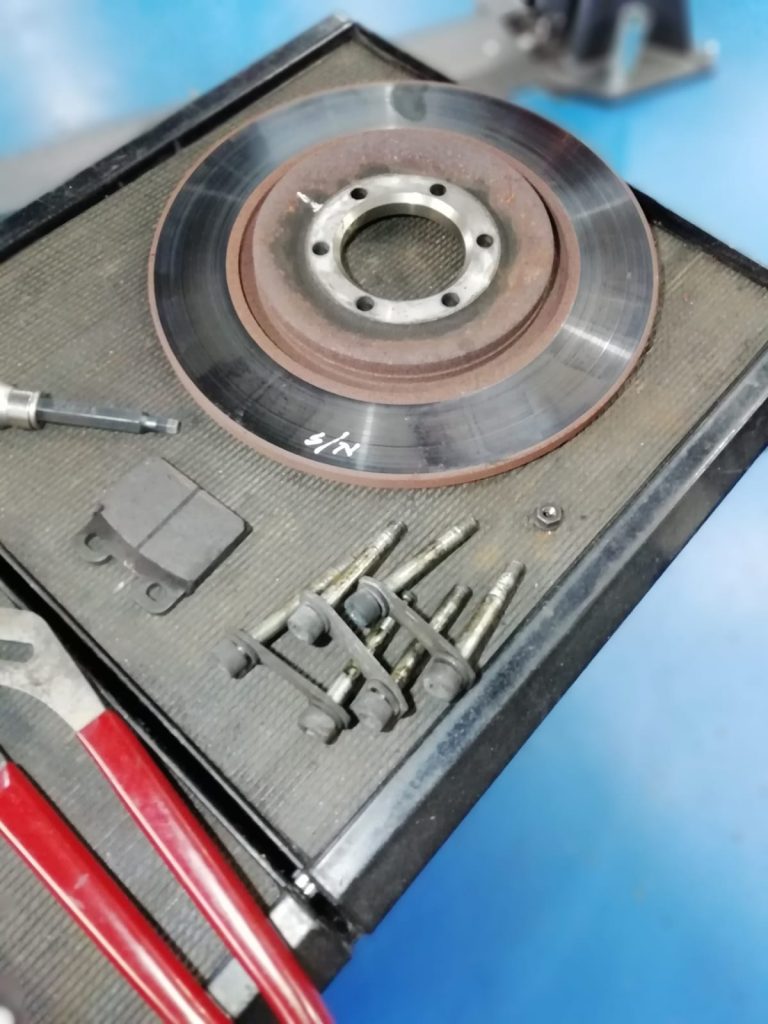
Before its guaranteed live draw on Friday evening, the team have worked on replacing the rear brakes on the 1981 Alfa Romeo Giulietta. The team

The in-house body team at Bridge Classic Cars have been focusing on reworking the front and rear bumpers of the 2005 Suzuki Every. The fibreglass

The Bridge Classic Cars workshop at our Suffolk HQ have just welcomed our latest guest. This 1981 MG B GT LE. The classic 1970s sports
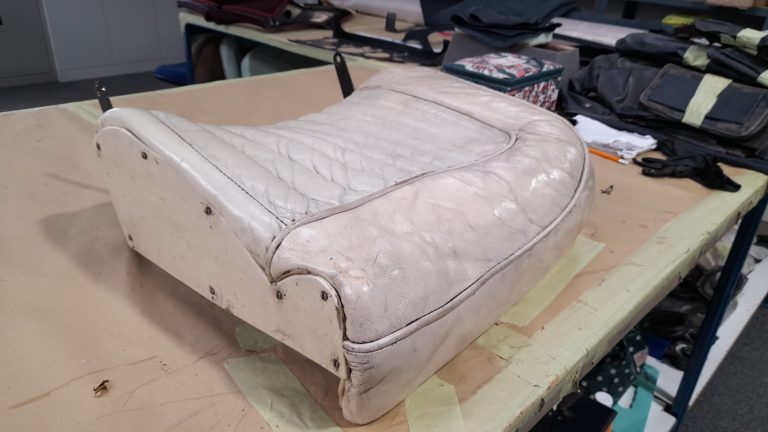
The trim shop at the Bridge Classic Cars Suffolk HQ have been working on repairing the seat base of the 1951 Jaguar XK120 Roadster while
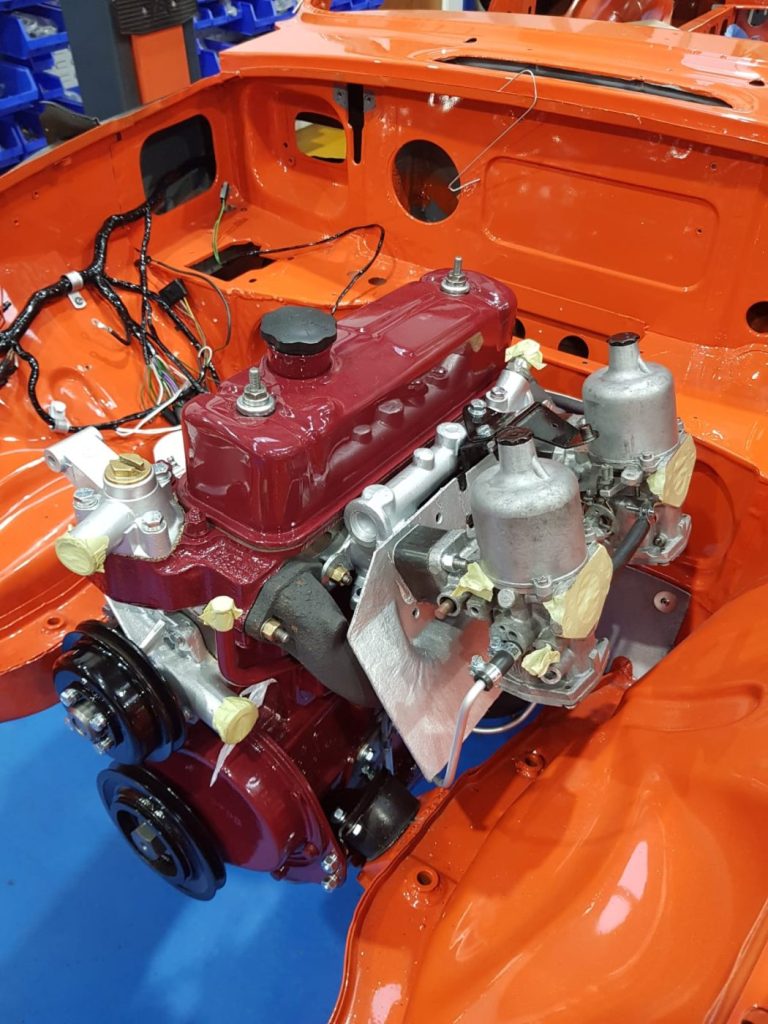
The workshop team at Bridge Classic Cars have been given the delicate task of getting several key pieces of the 1978 MG B GT back
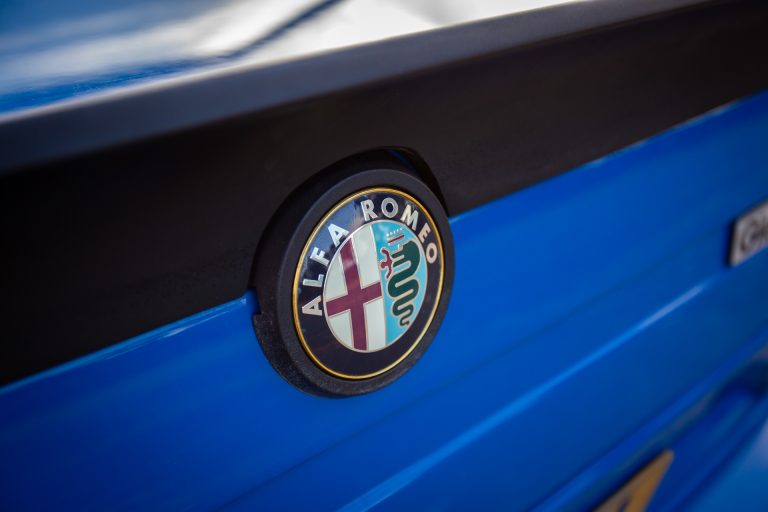
The Alfa Romeo Giulietta – A legendary name in the automotive world for many different reasons. But, one thing the plucky 4-door Italian saloon has
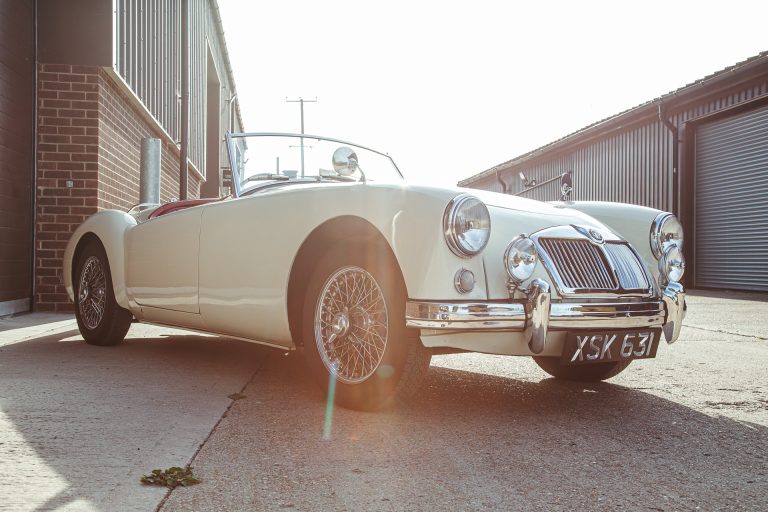
Recently arrived at the Bridge Classic Cars workshops at our Suffolk HQ is this stunning 1957 MG A Roadster. The car has come in for
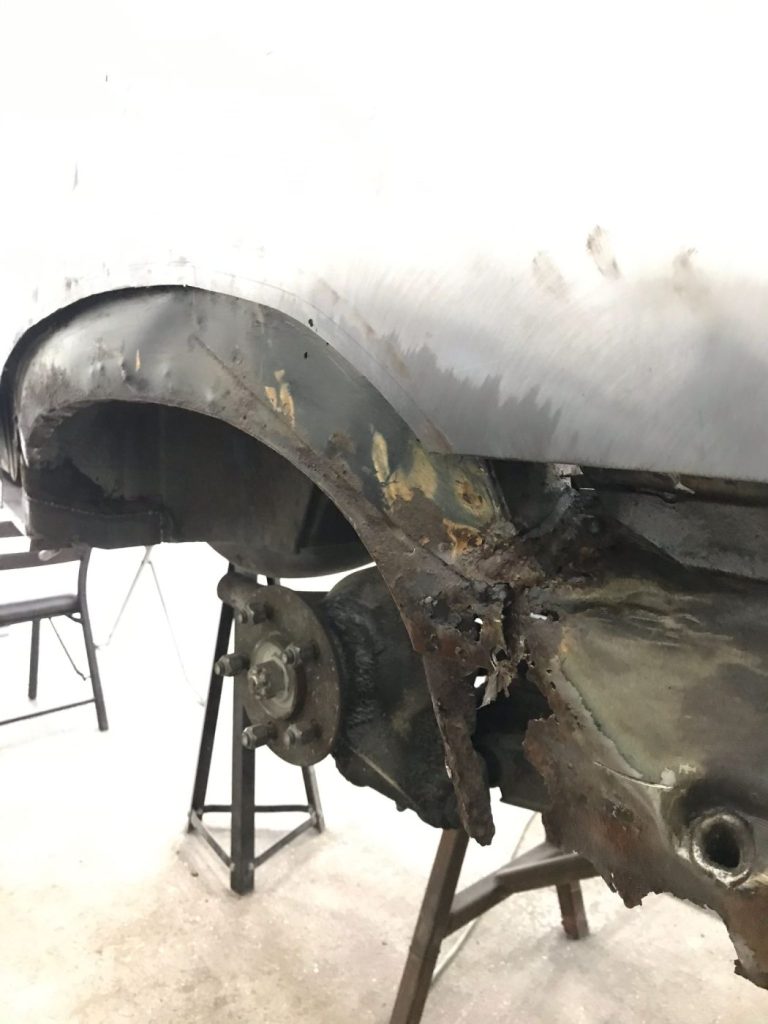
The fabrication team at the Bridge Classic Cars Suffolk HQ have been busy working on repairing the inner and outer wheel arch on the 1986

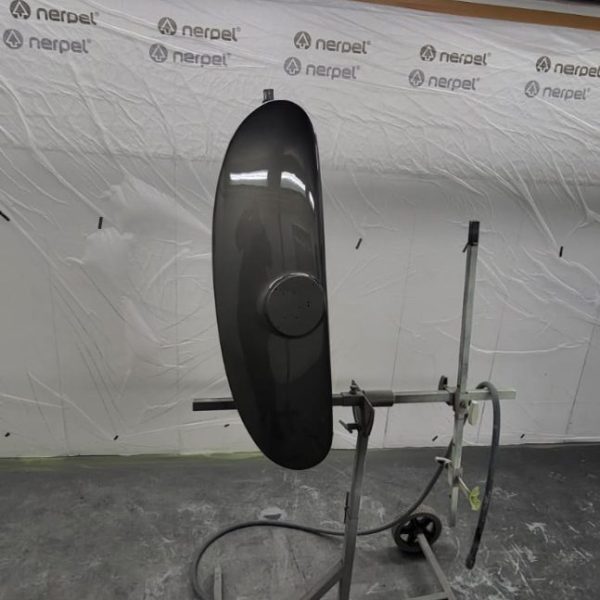
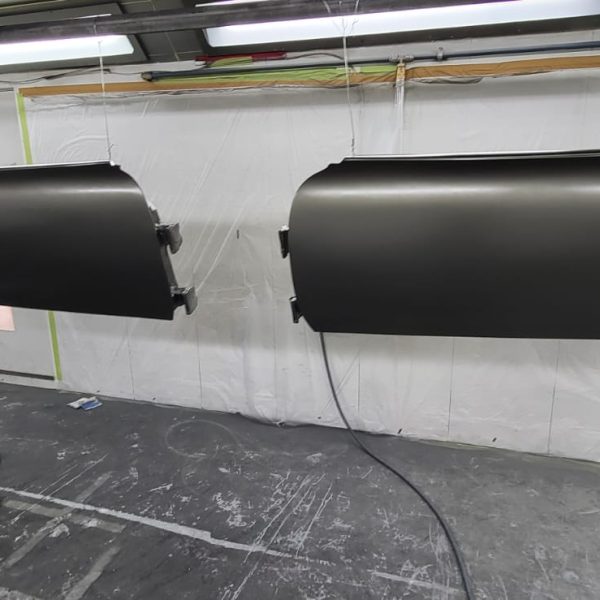
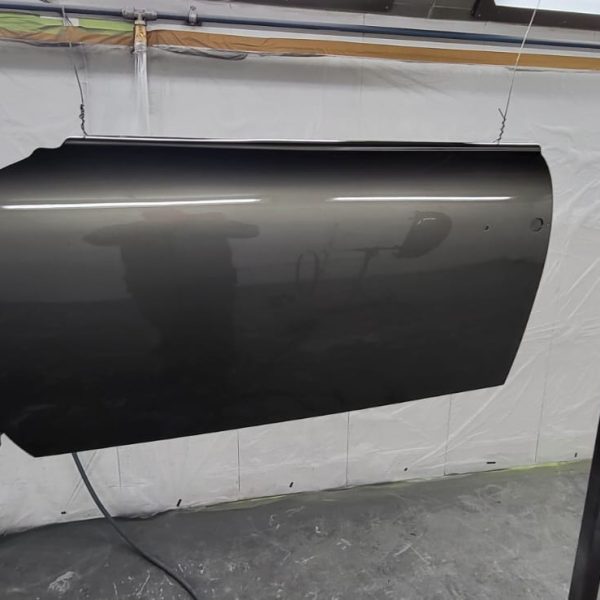
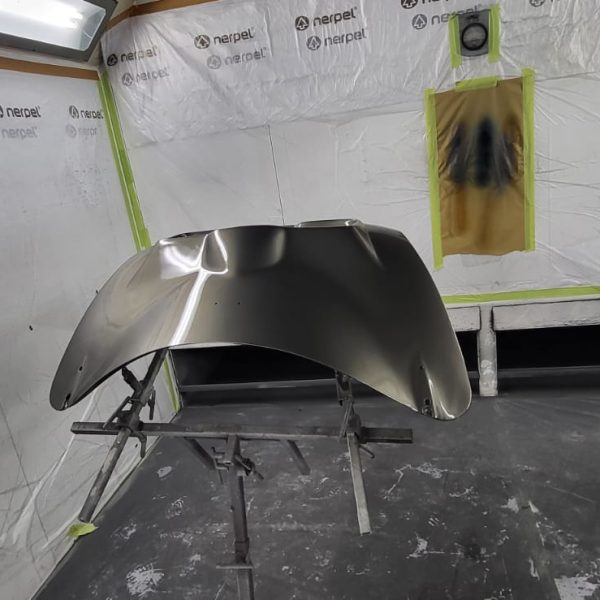
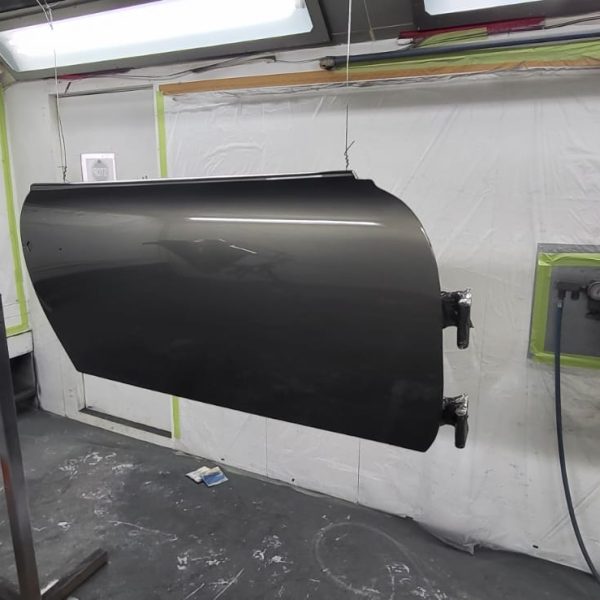

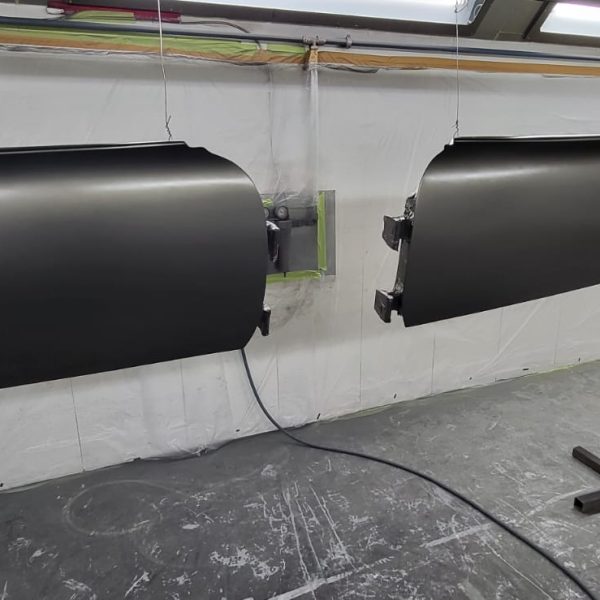



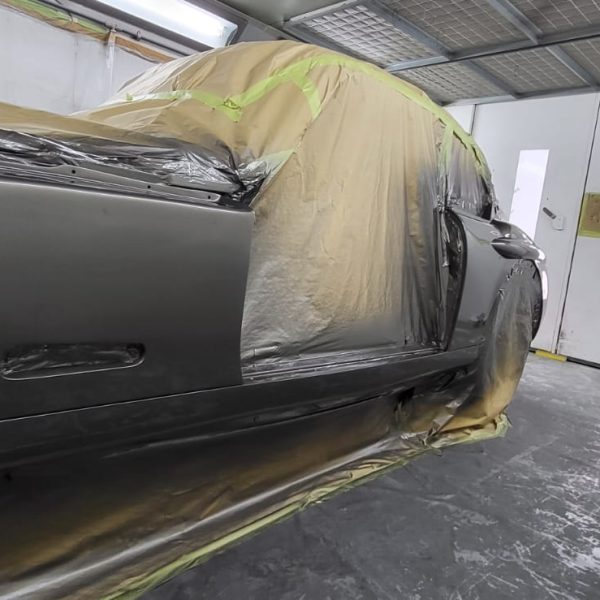
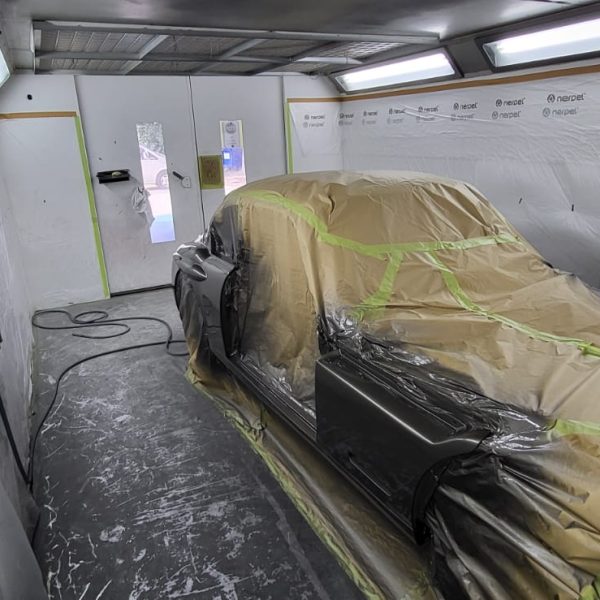
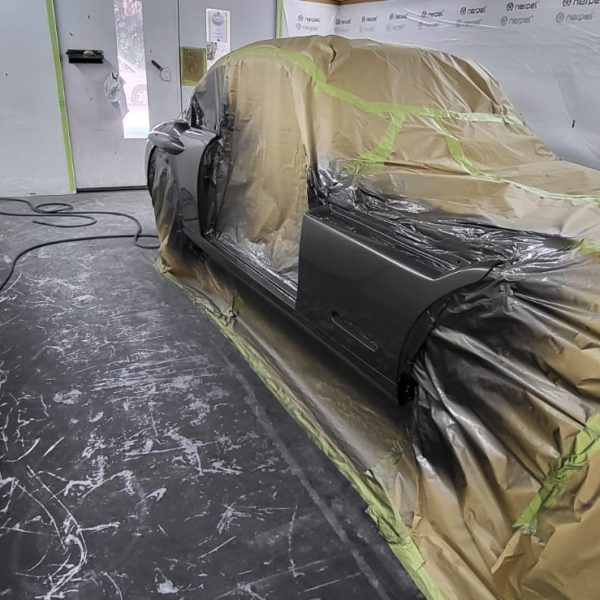

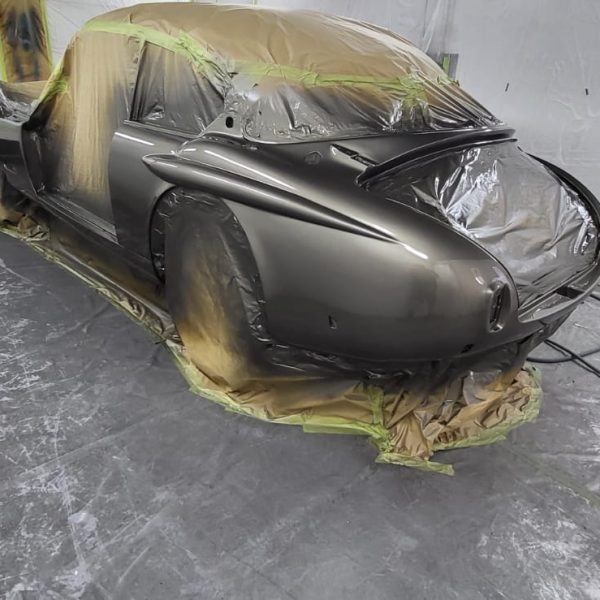

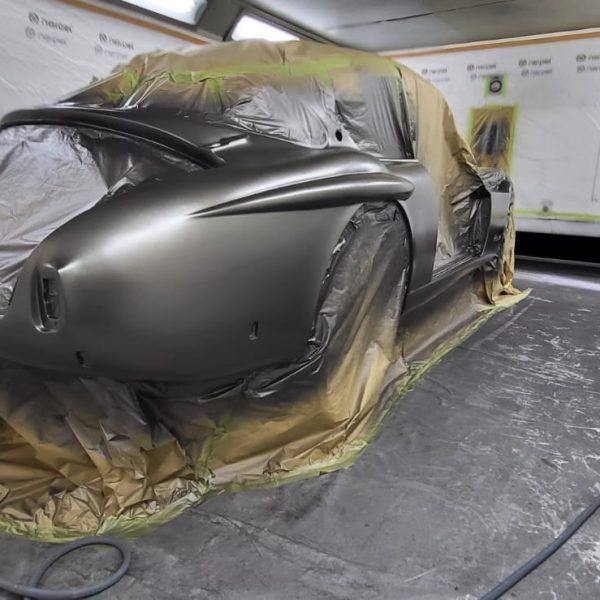
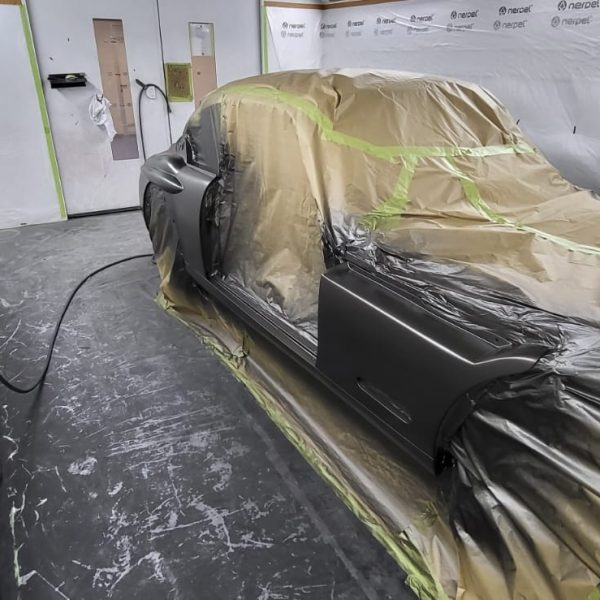

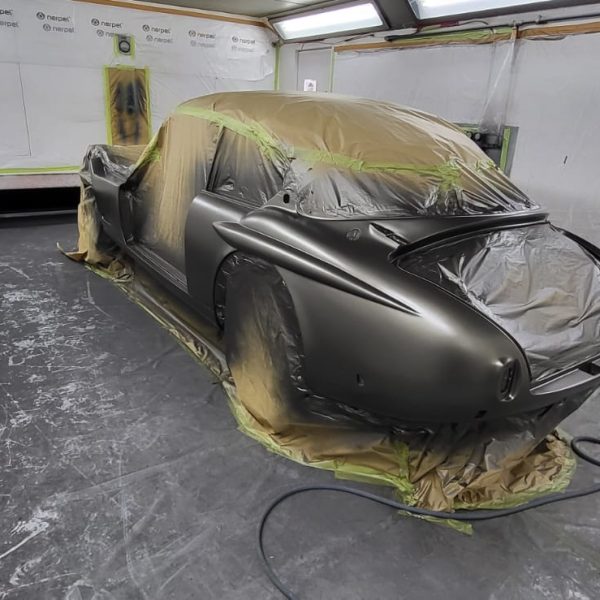
The 1958 Jensen 541R has been back into the Bridge Classic Cars in-house paint booth to have its body painted.
The team began by getting the doors and grille painted in a dark silver/bronze colour, contrasting against the beautiful dark blue of the roof. Then, each piece was clear coated and left to cure.
The body was then taken into the booth to be finished. Chris, one of our amazing painters, laid down layer after layer of the paint letting it cure before applying the clearcoat which is being left to harden before it can be sanded and fully polished to a mirror-like finish.
Here are some photos of what it looks like together:


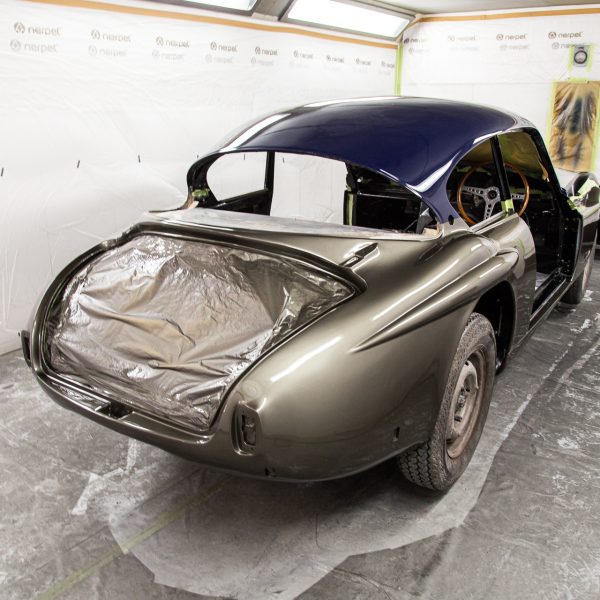
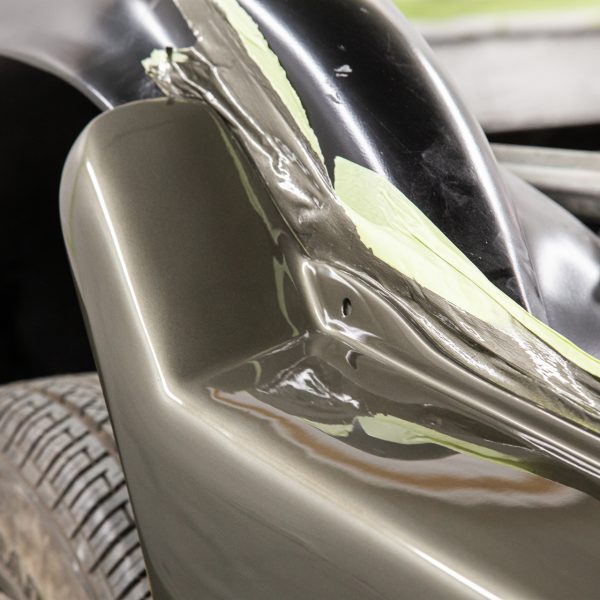
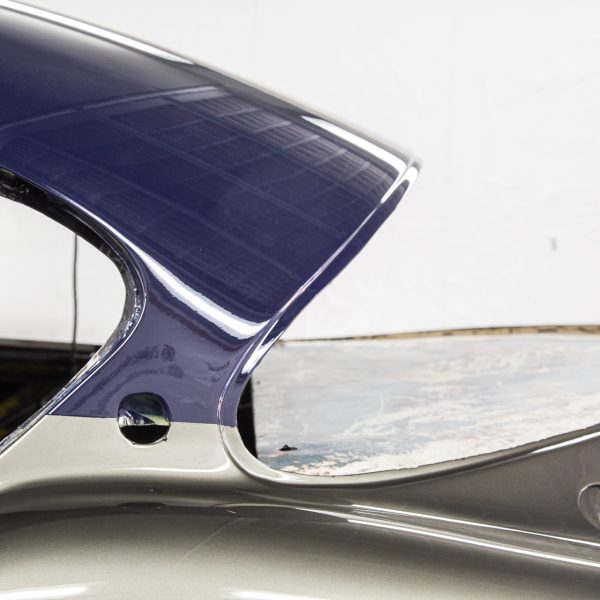
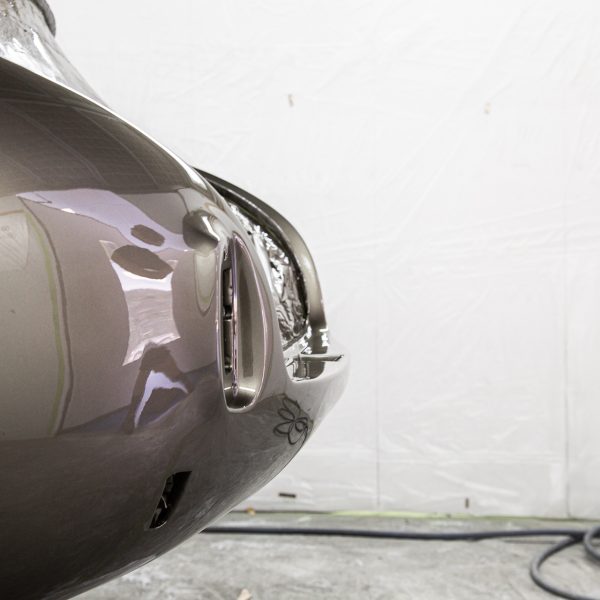
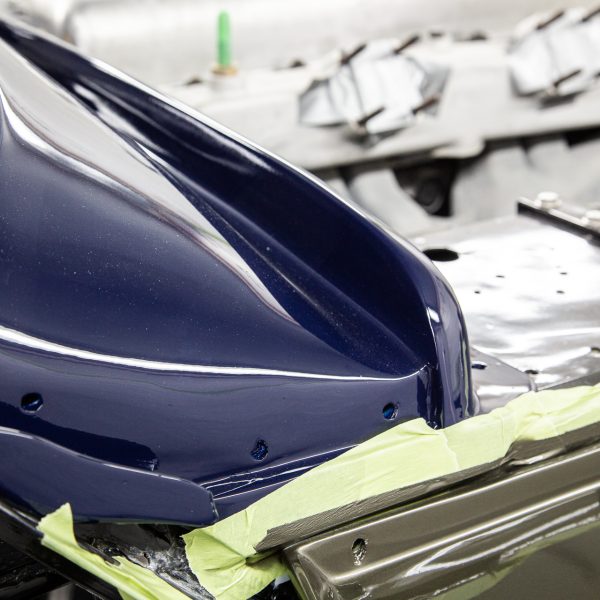
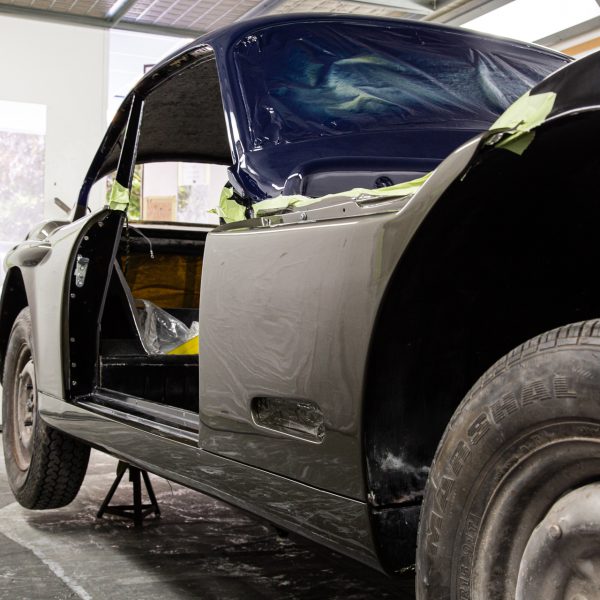
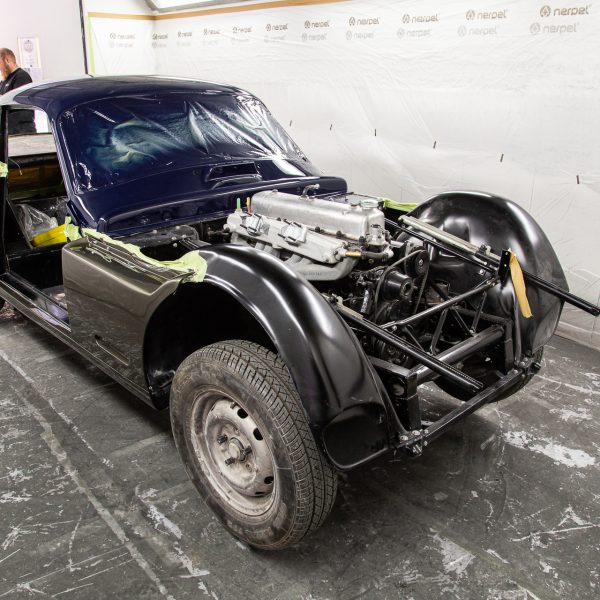
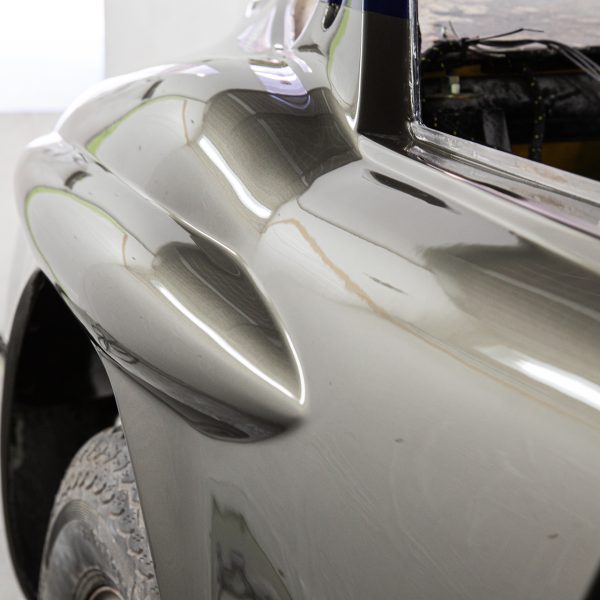

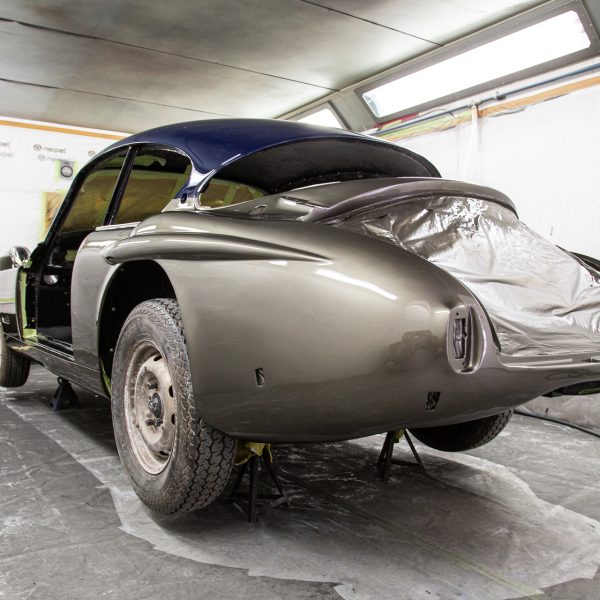

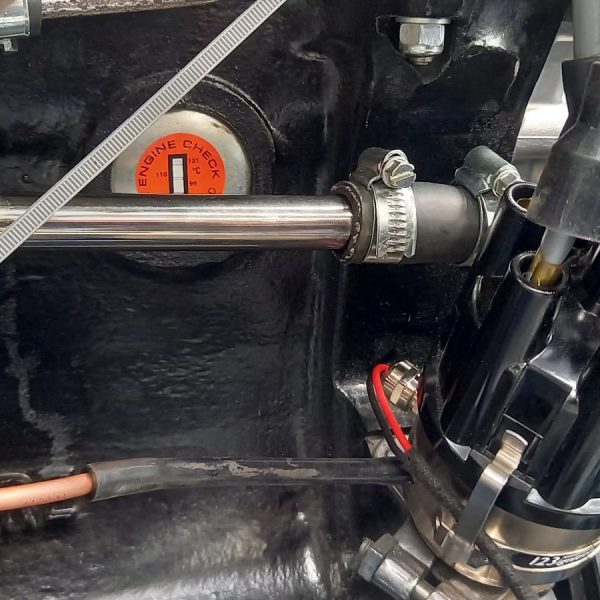


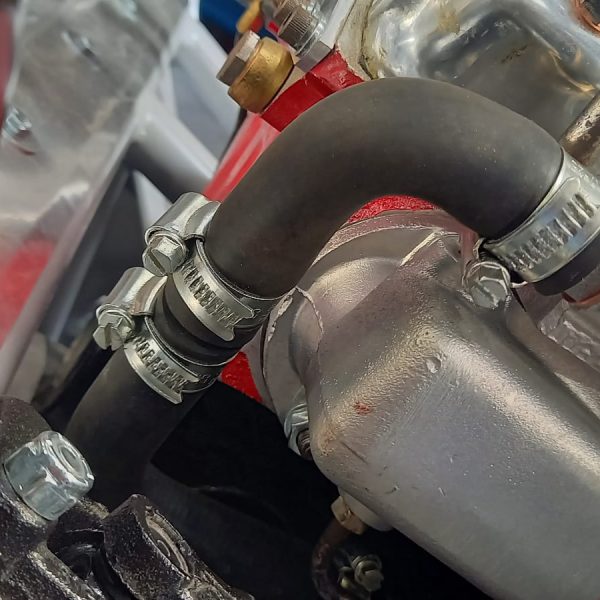
The workshop team at Bridge Classic Cars have been working on getting the plumbing fitted up in the engine bay of our 2022 Bridge C-Type Replica.
The first job was to route and fit up the radiator hoses around the engine, making sure to safely run them around any belts or pulleys. The team have also set up the hoses to bypass the heater at the back of the inlet manifold.
Finally with the hoses sorted out, the team could make, route and secured the brake servo pipework. Another crucial set of jobs completed on our C-Type Replica.
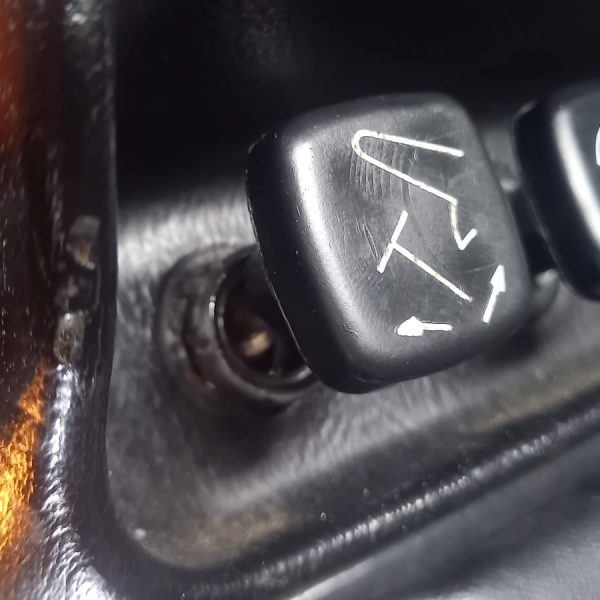
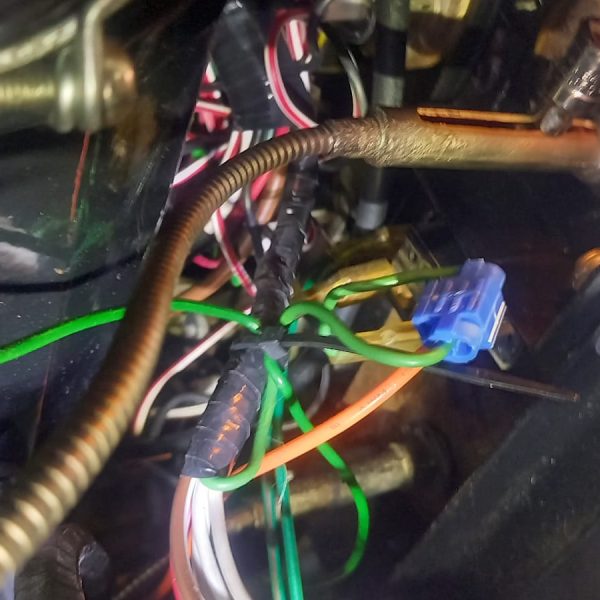
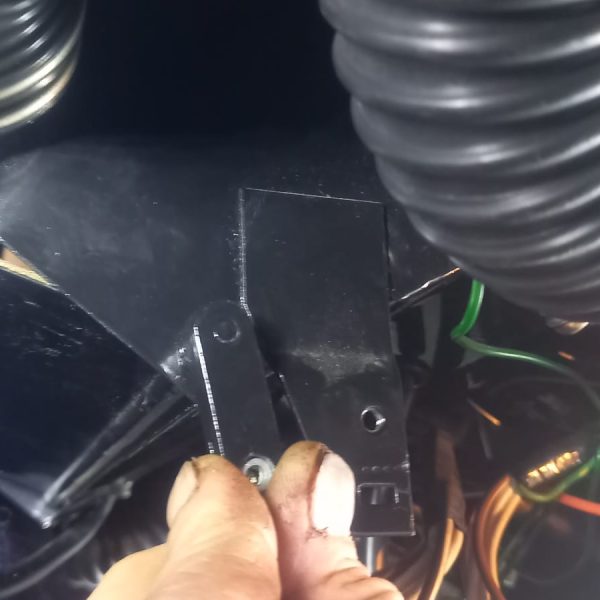
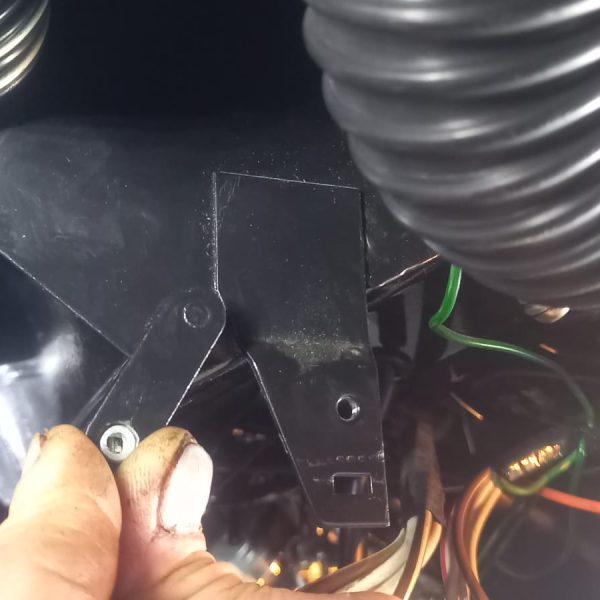
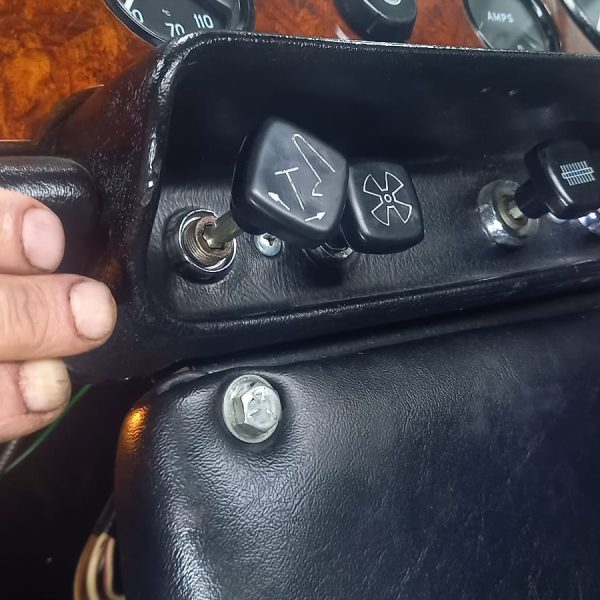
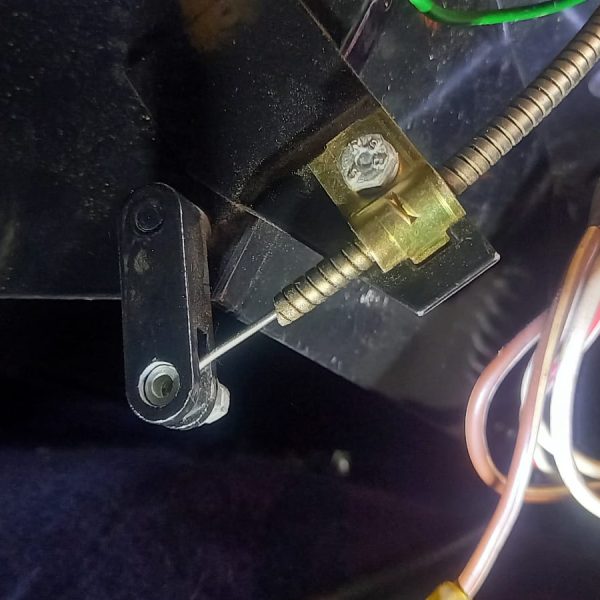
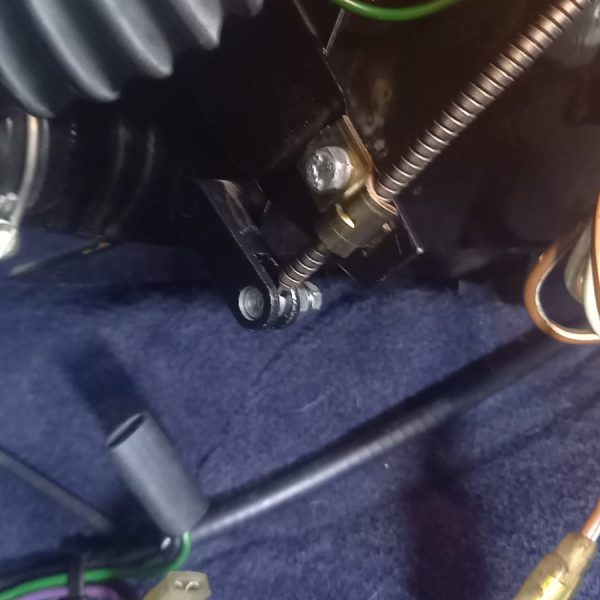
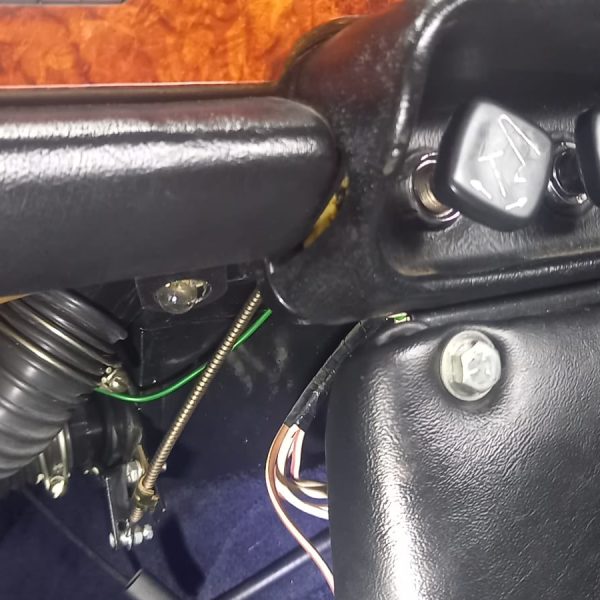
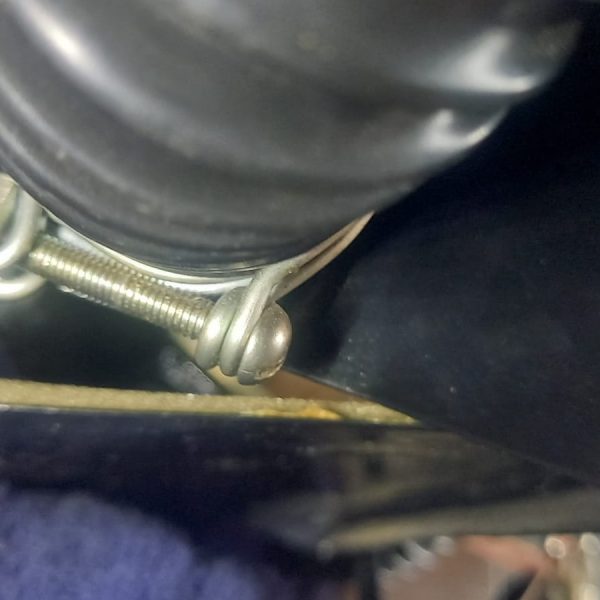
The technicians in the Bridge Classic Cars workshop have been working on getting the heater system working properly on the 1968 Triumph TR5.
Jon found the cable which controls the heater wasn’t working but also that the heater flaps had almost seized in the dashboard. Jon freed up the flaps and found the heater box had distorted slightly not allowing the direction flap to move freely but after some adjustments all was ok and then could work on replacing the heater cable into the dash.

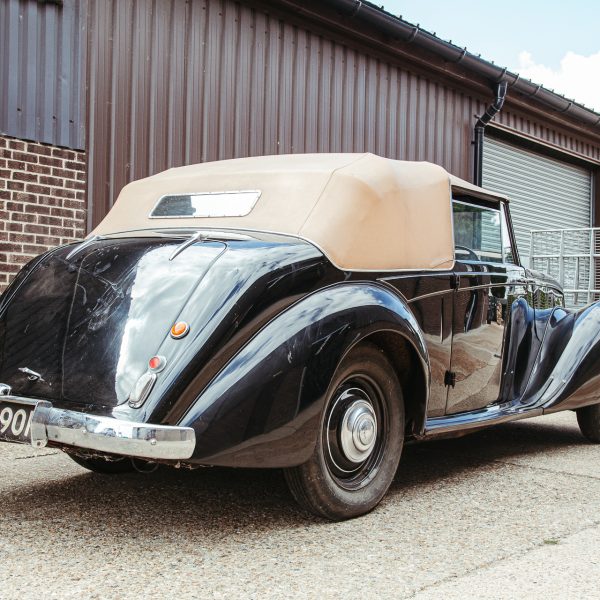
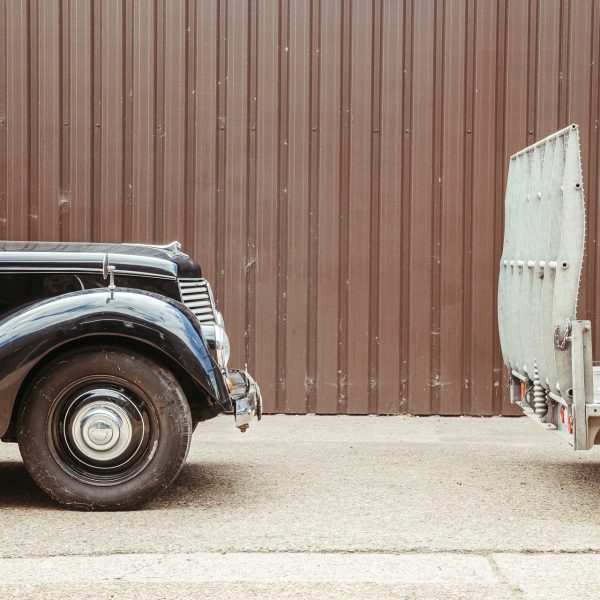
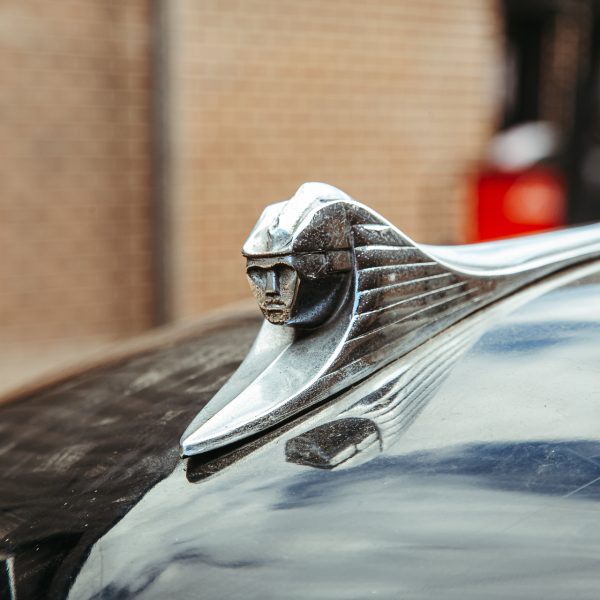
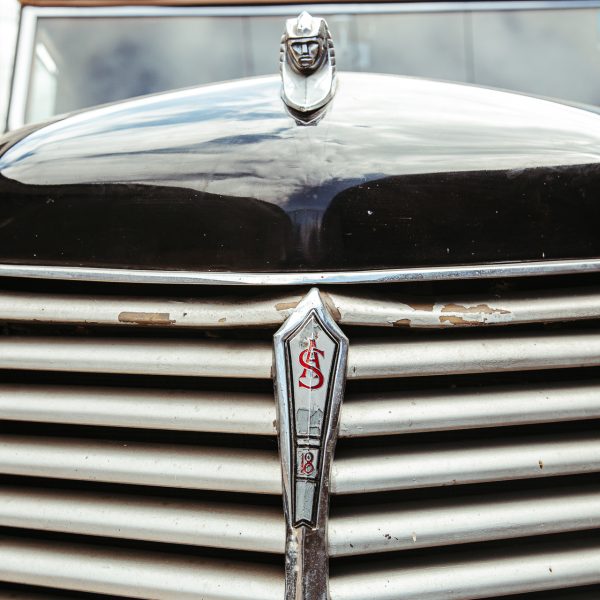

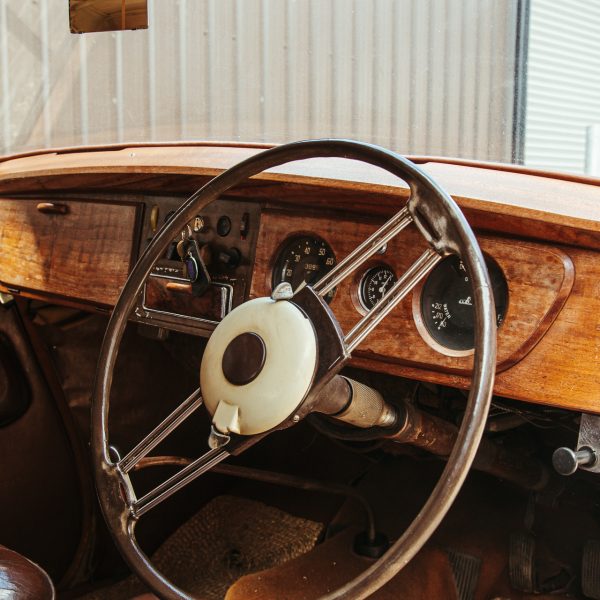
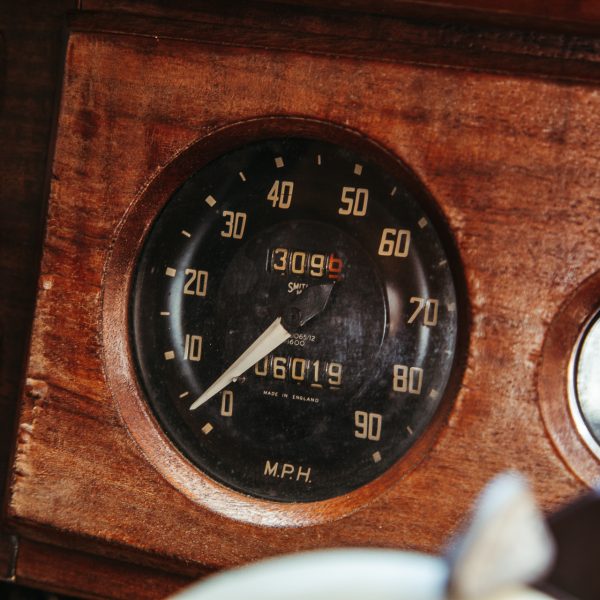

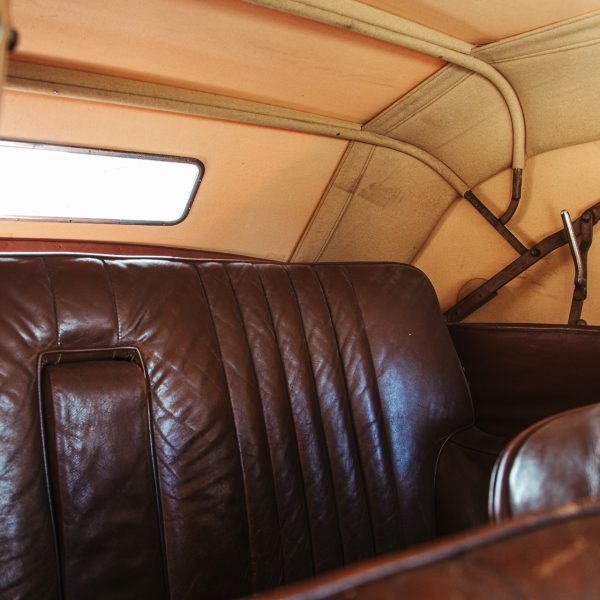
The latest arrival at the Bridge Classic Cars Suffolk HQ is this beautiful 1953 Armstrong Siddeley.
The classic convertible has come in for our restoration teams to begin work on recommissioning the car for its owner. First port of call – freeing the wheels. The wheels on the Hurricane have come seized and the team, when they went to collect the car, had to put the car onto moveable skates to get it out of the owner’s garage.
Take a look at the photos from our transport team getting the car out and on its way back to our restoration workshops.
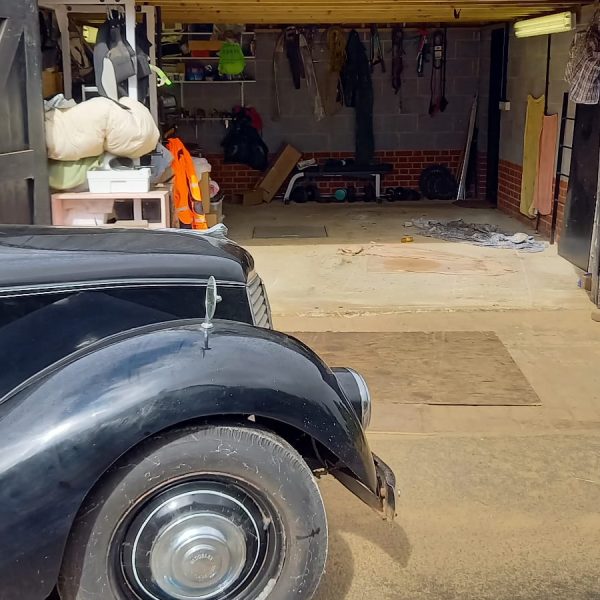
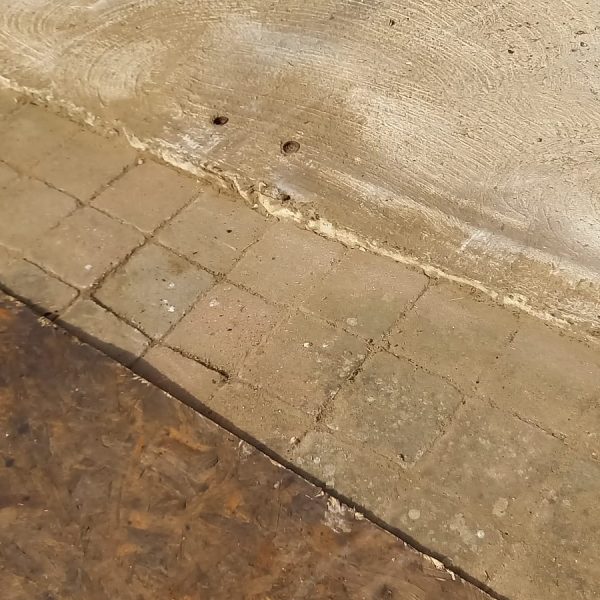
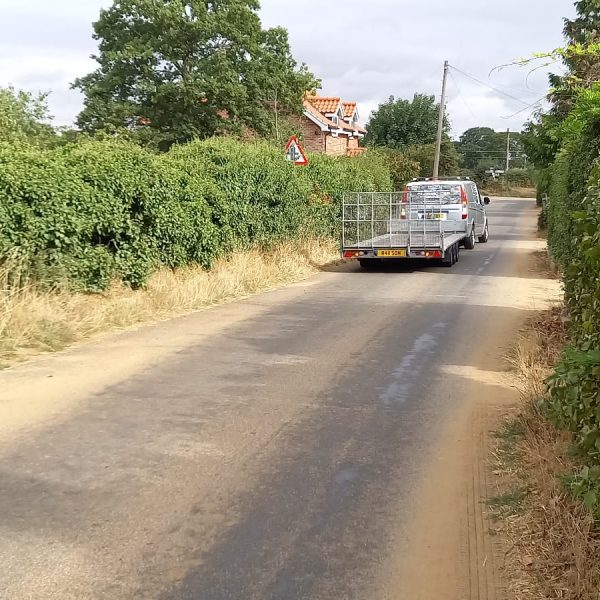


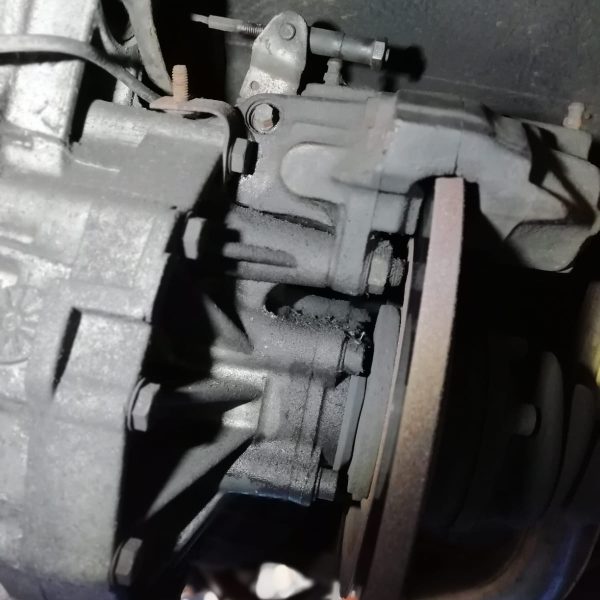
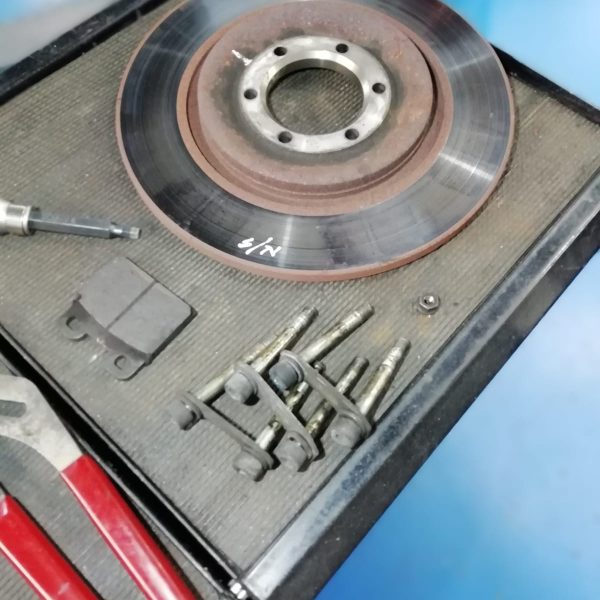
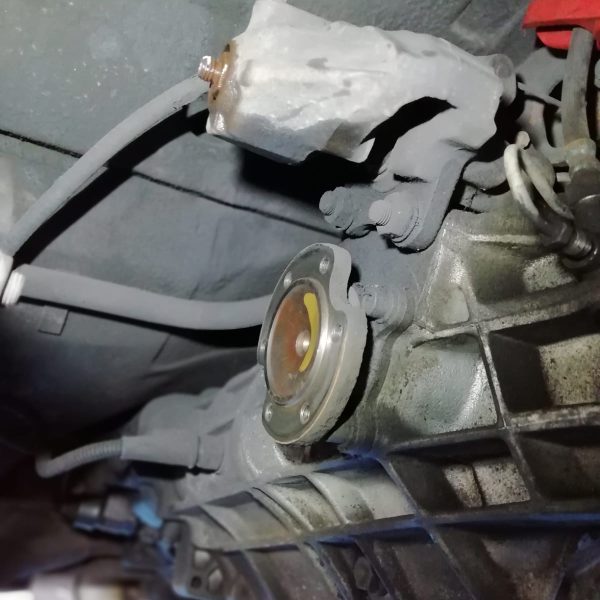

Before its guaranteed live draw on Friday evening, the team have worked on replacing the rear brakes on the 1981 Alfa Romeo Giulietta.
The team have begun by removing the inboard discs and could then inspect the calipers to make sure all seals and pistons were all in good order. The team are currently waiting on the new discs which will then be refit and tested.


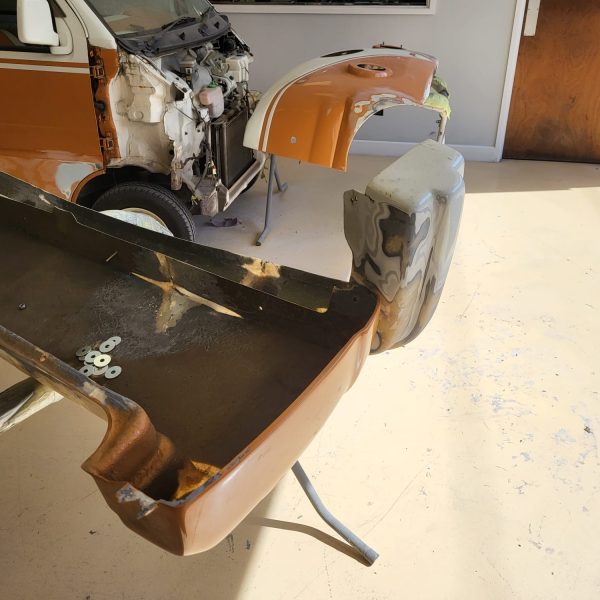

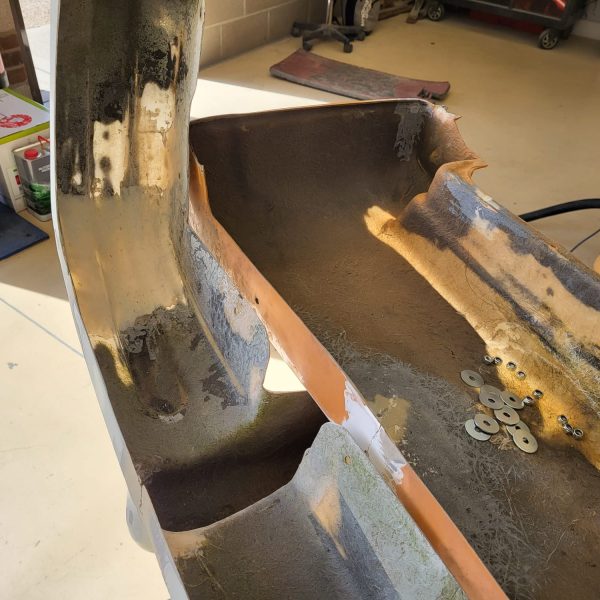
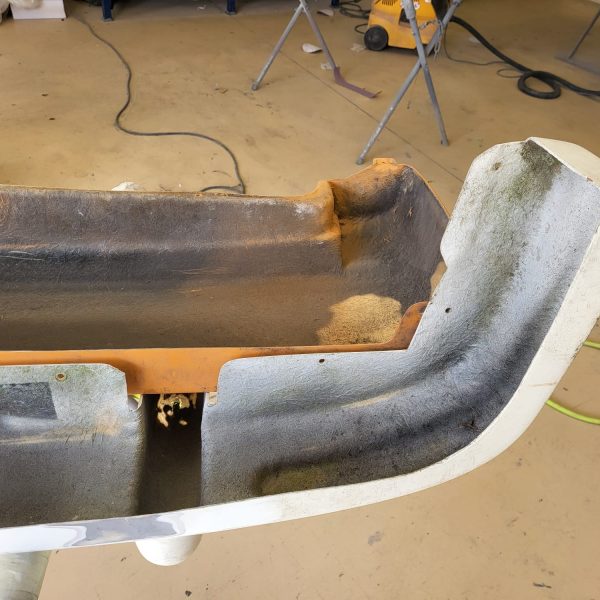
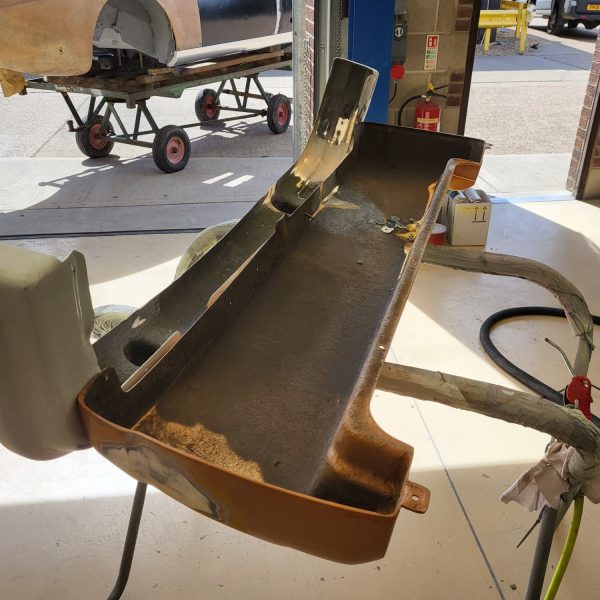
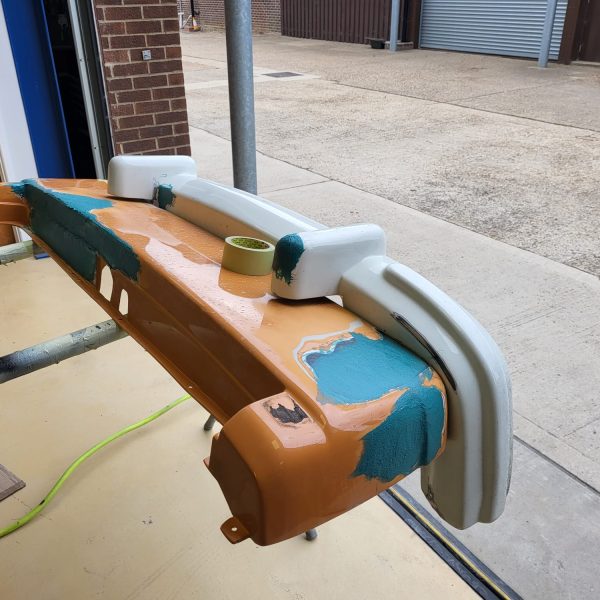
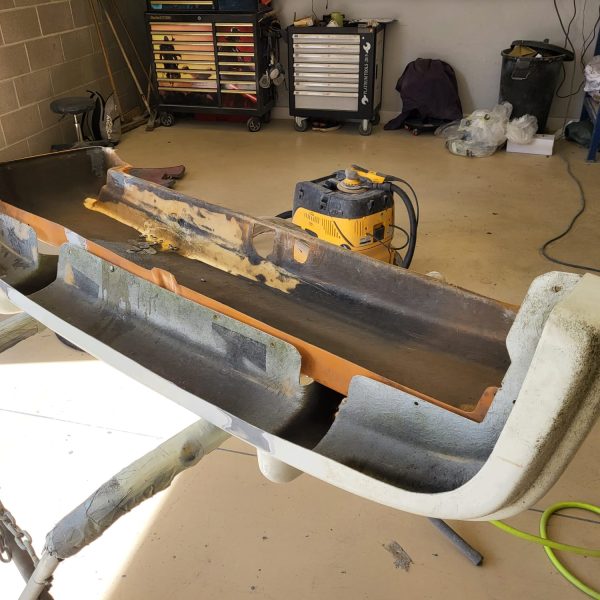
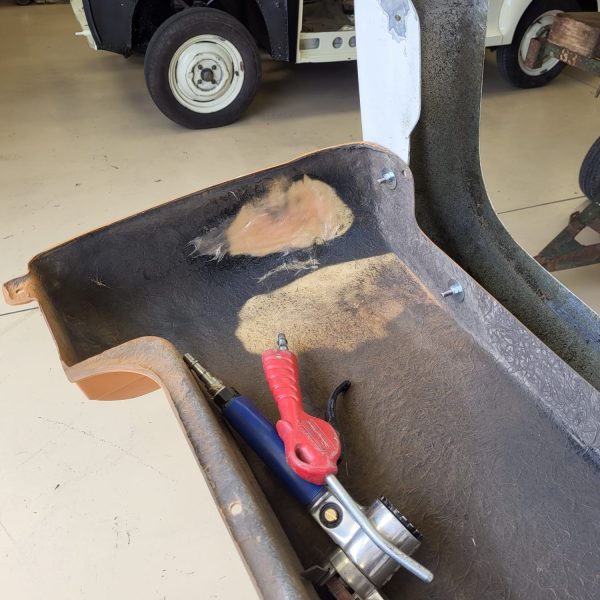
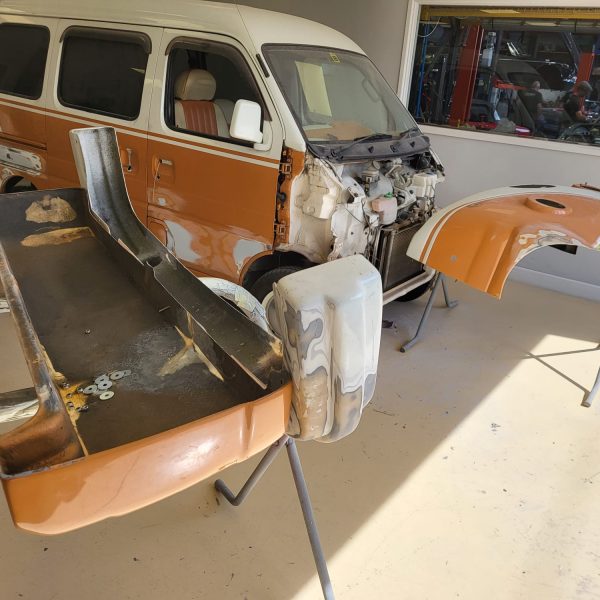
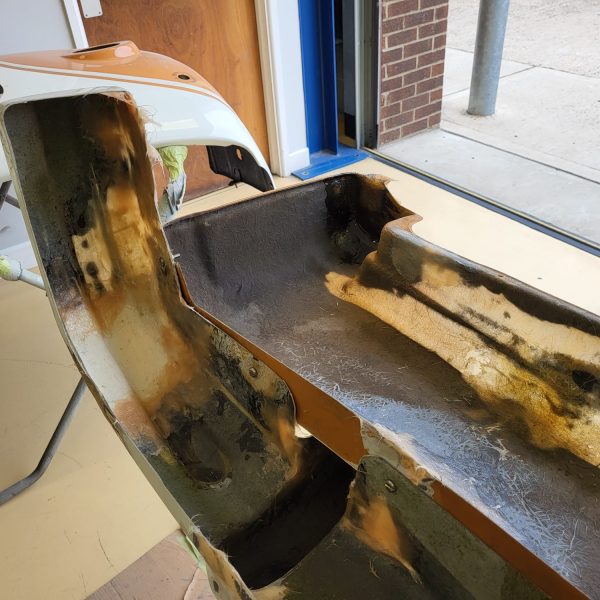
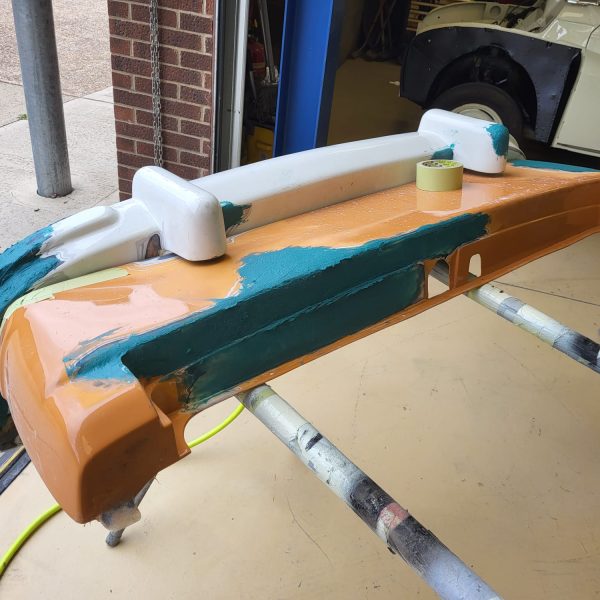

The in-house body team at Bridge Classic Cars have been focusing on reworking the front and rear bumpers of the 2005 Suzuki Every.
The fibreglass panels have been sanded and filled to get them looking just right. Also, the team have gone and fitted up the fibreglass replica bumpers and also begun to rework the shape and fitment of them to the rest of the bodywork.
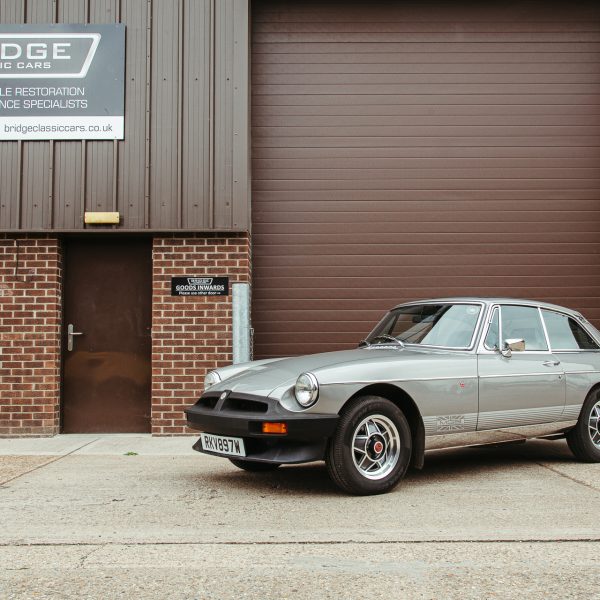
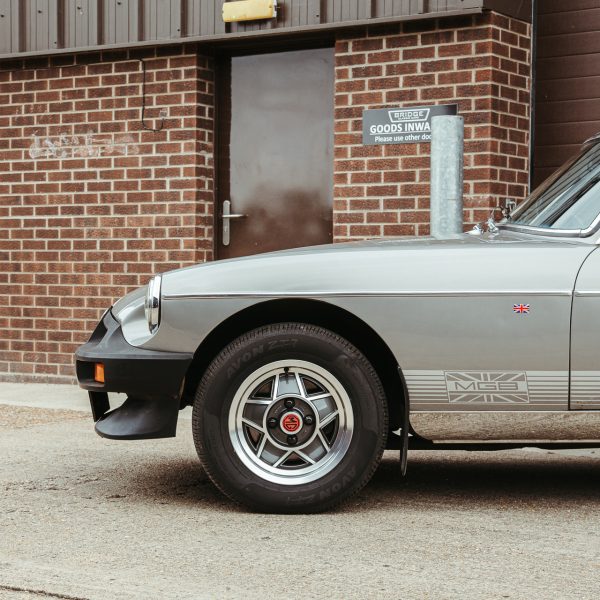

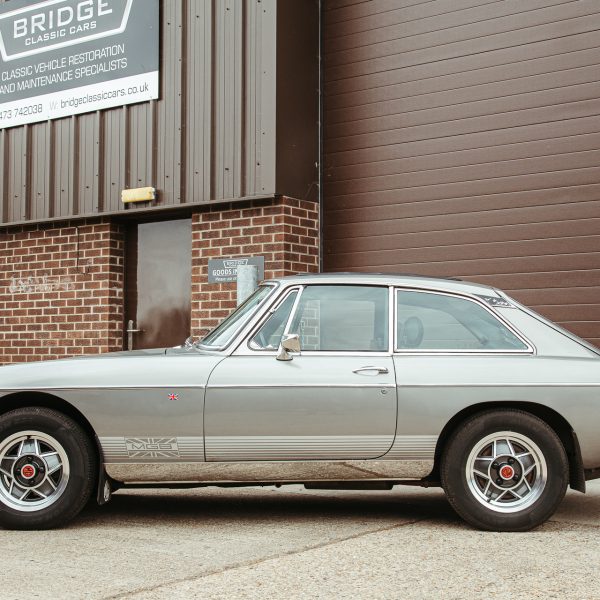
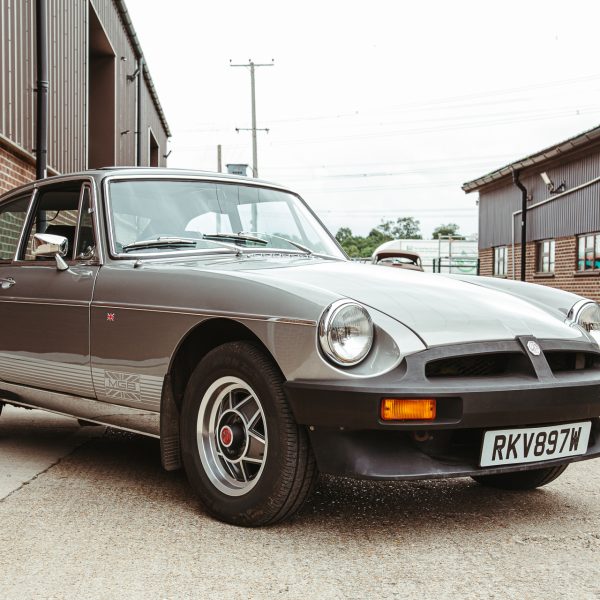
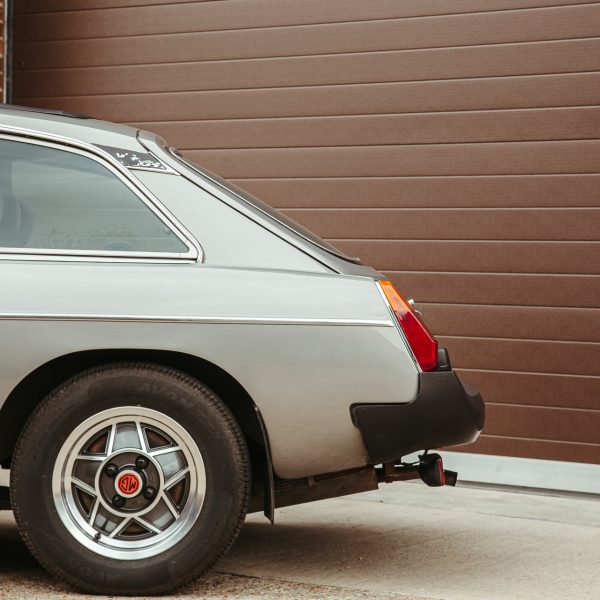
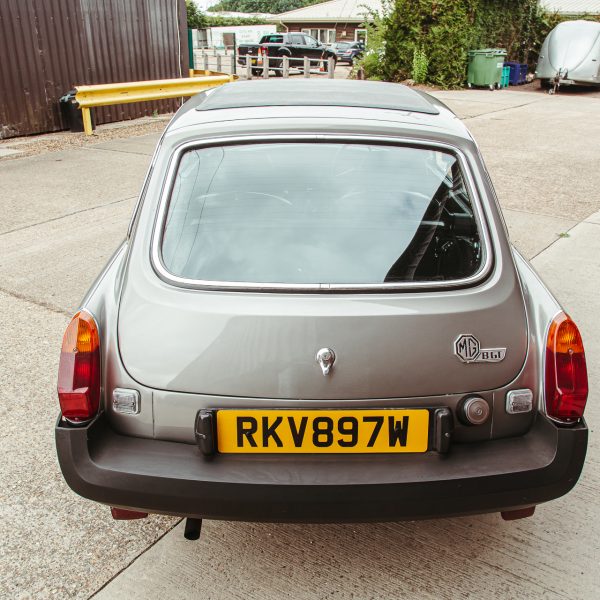

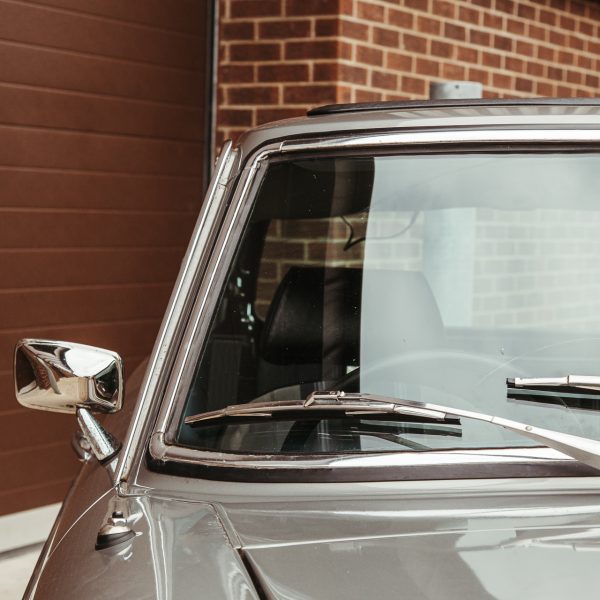
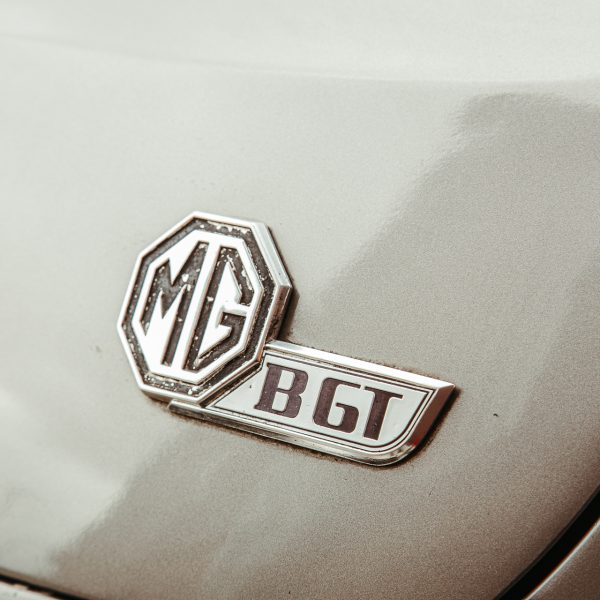
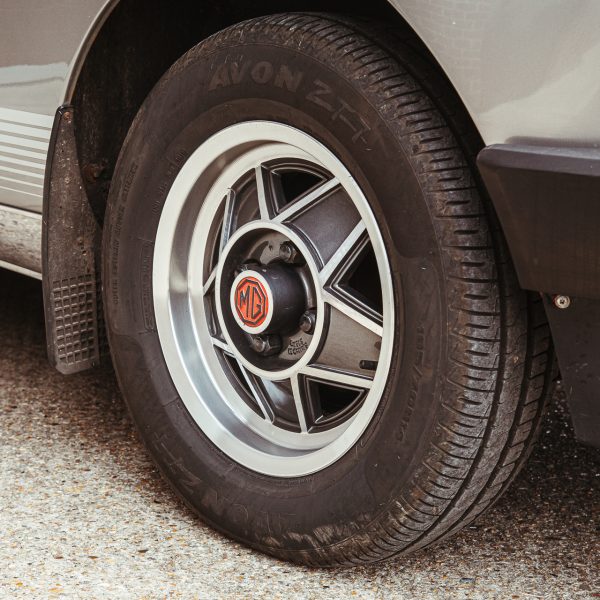
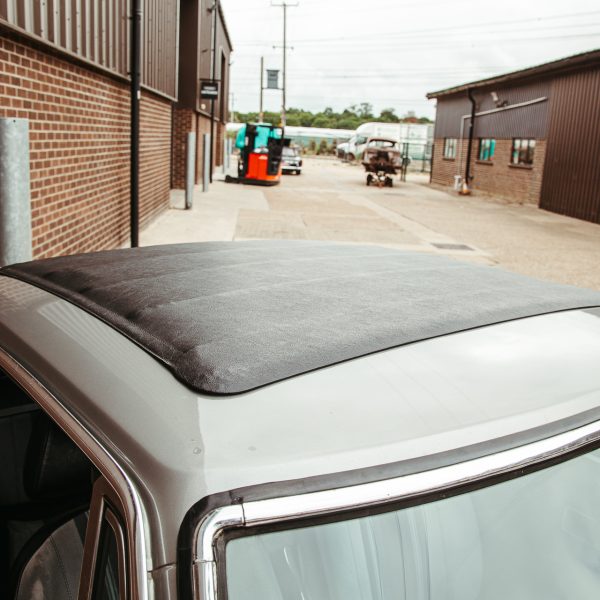
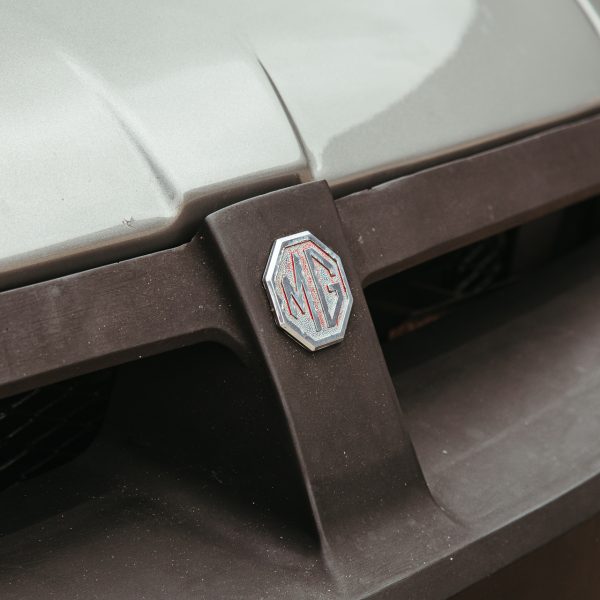
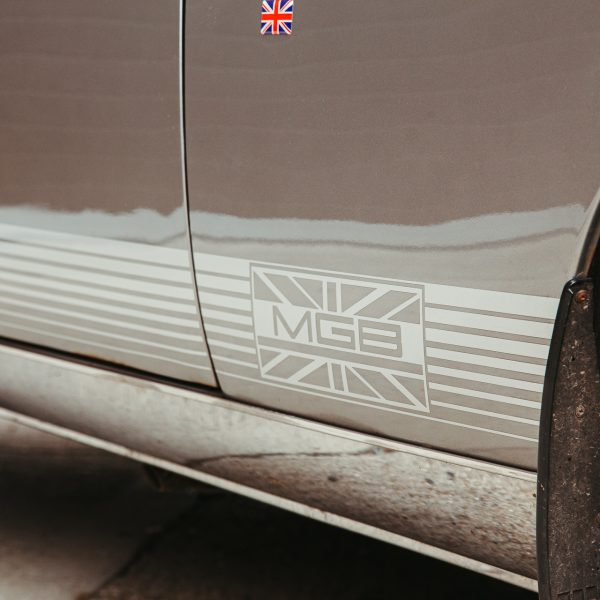


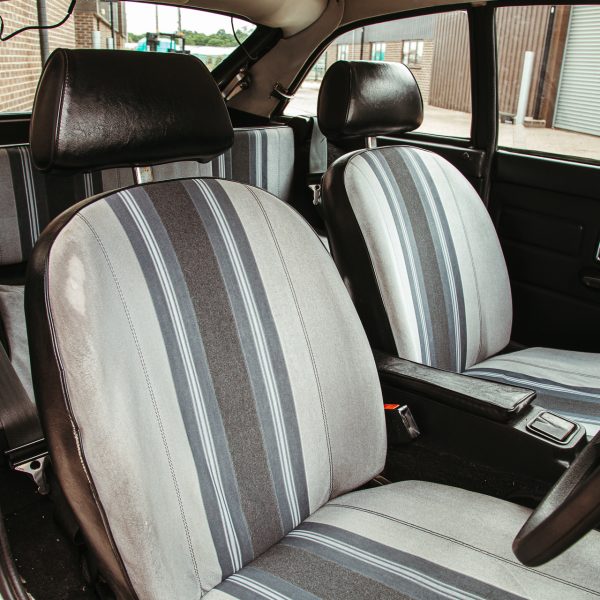
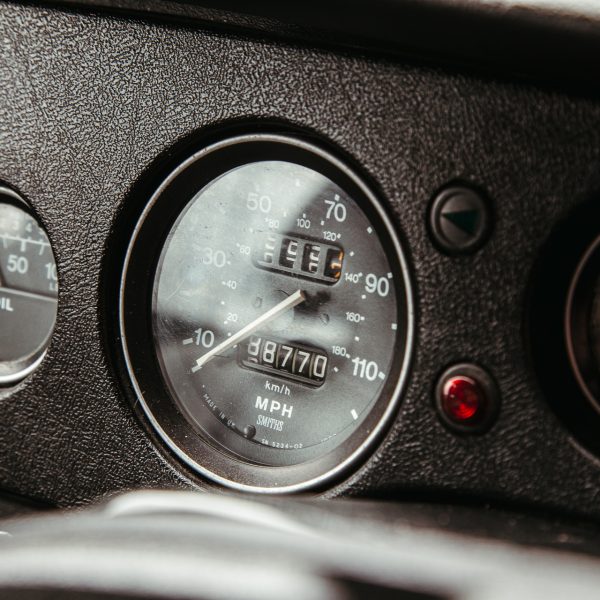
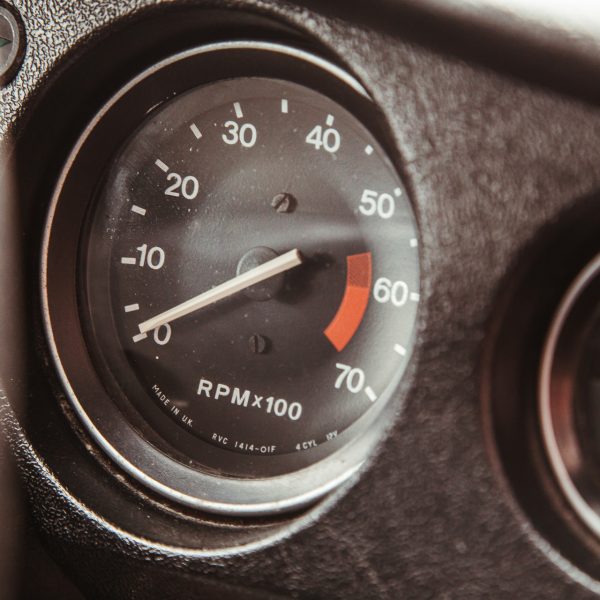

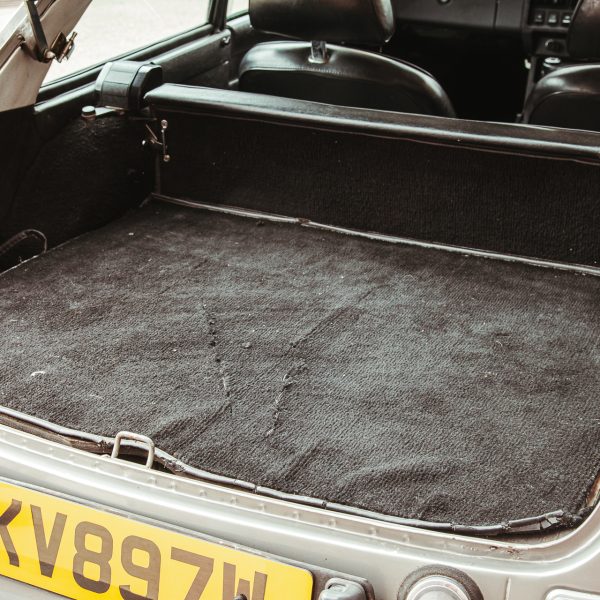
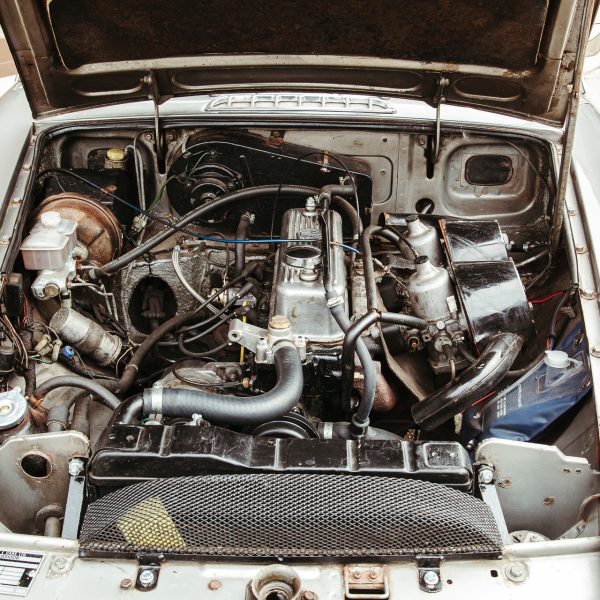
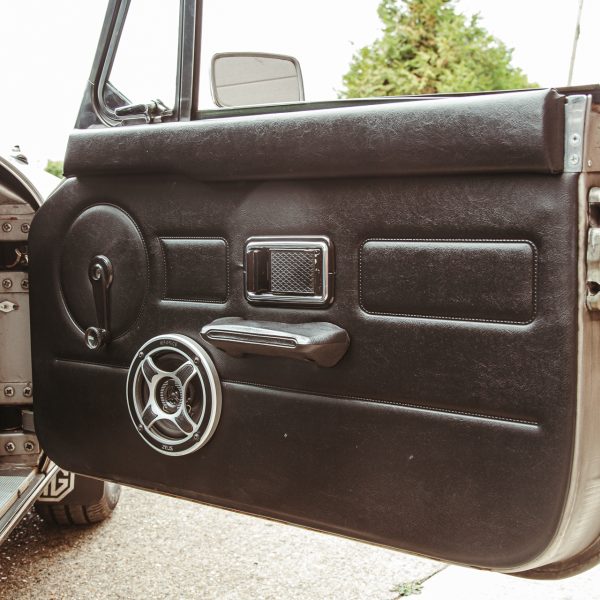
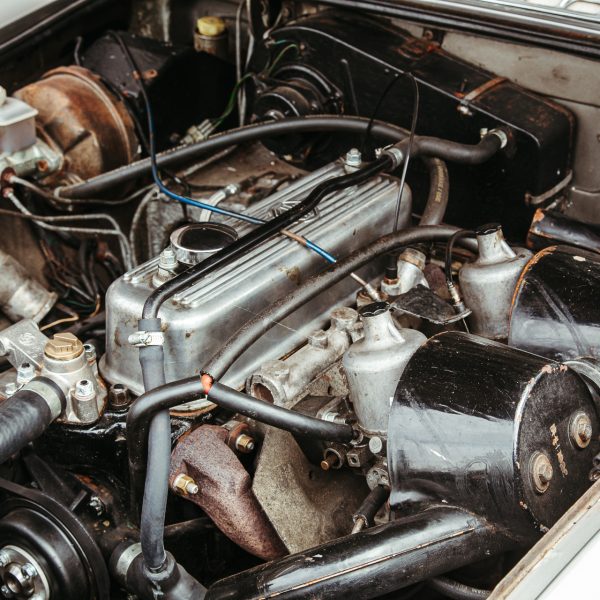
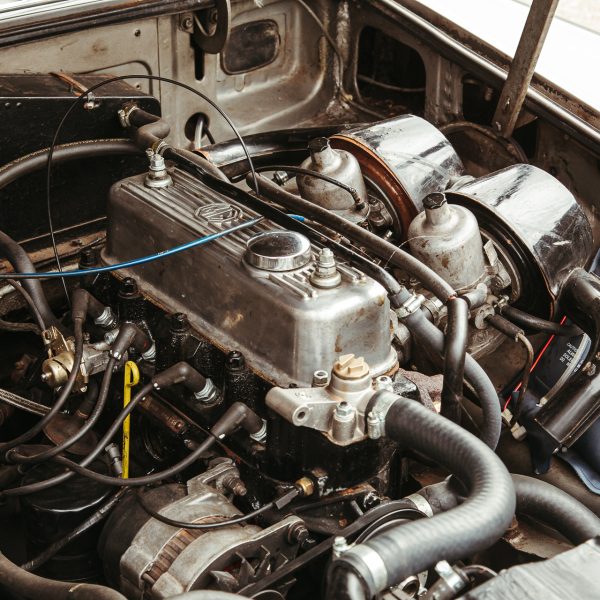
The Bridge Classic Cars workshop at our Suffolk HQ have just welcomed our latest guest. This 1981 MG B GT LE.
The classic 1970s sports car will be completely inspected and assessed by our restoration teams who will compile their condition report and carry out any necessary work.
Keep a look out on the Bridge Classic Cars news page for more updates very soon on the 1981 MG B GT LE.

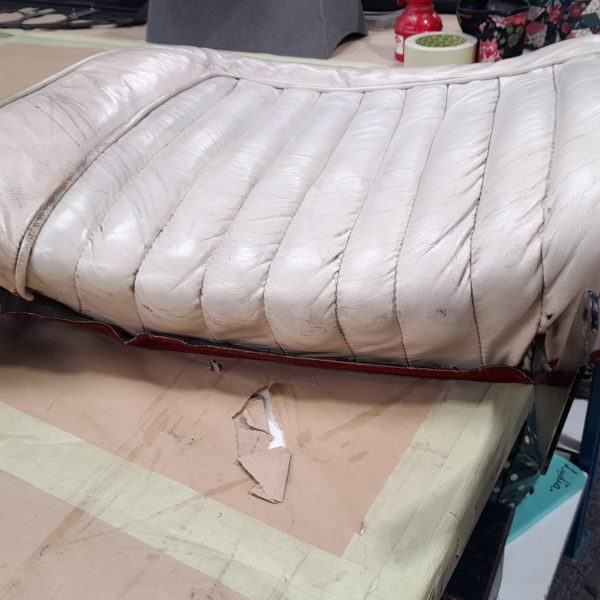

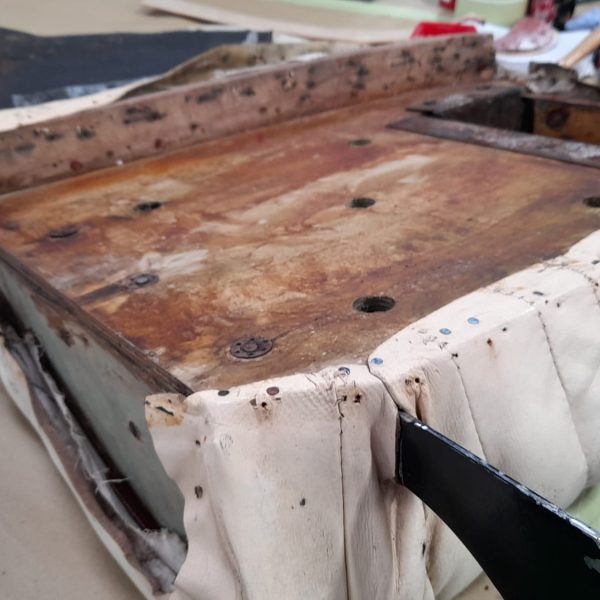

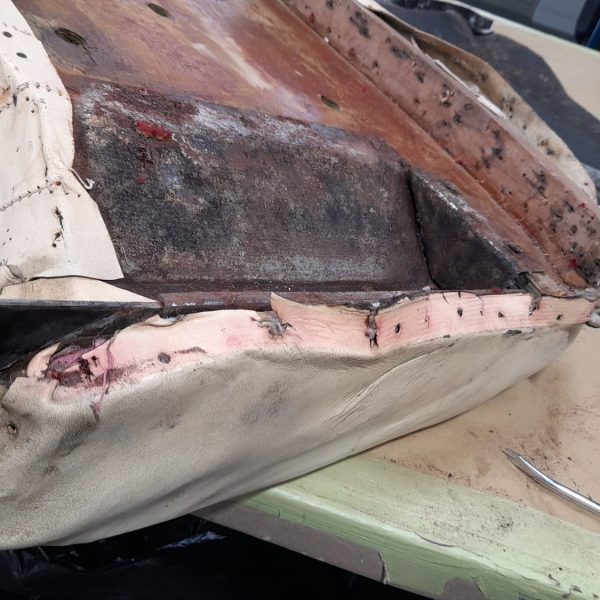
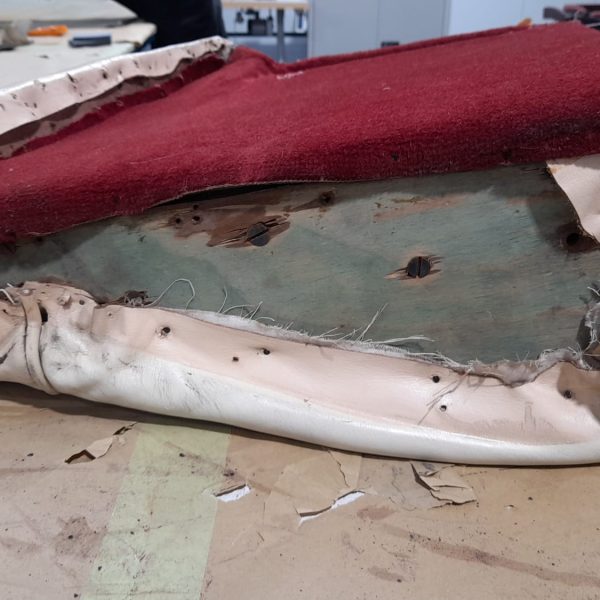


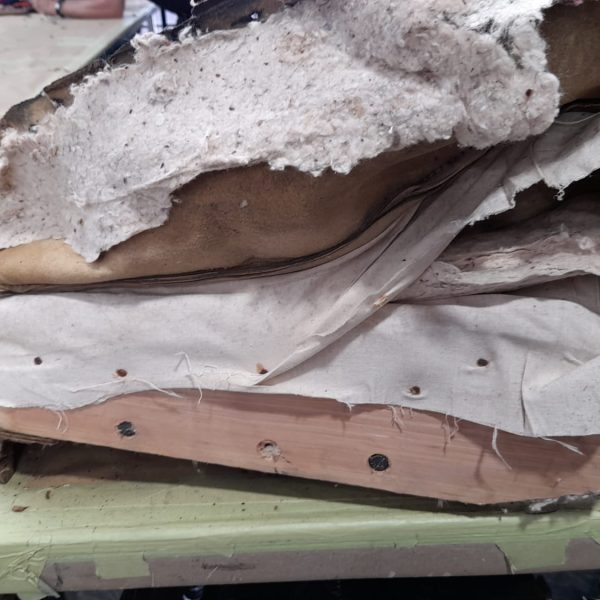
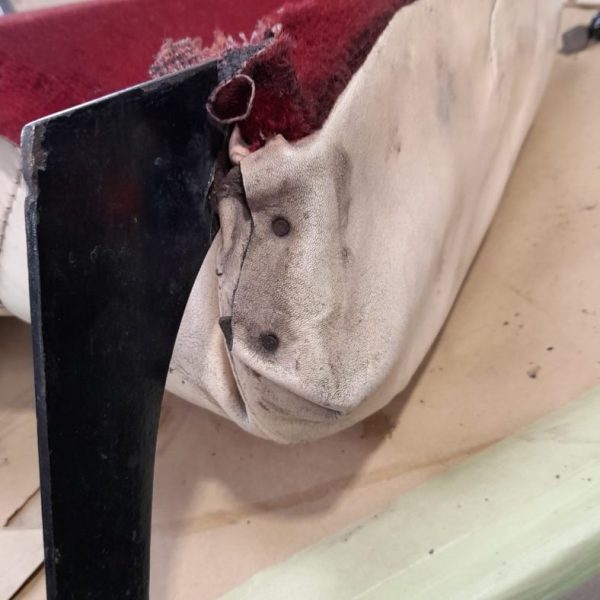

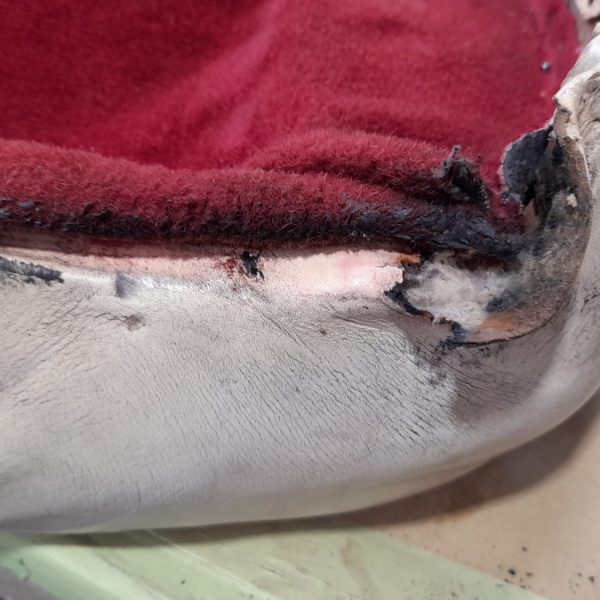
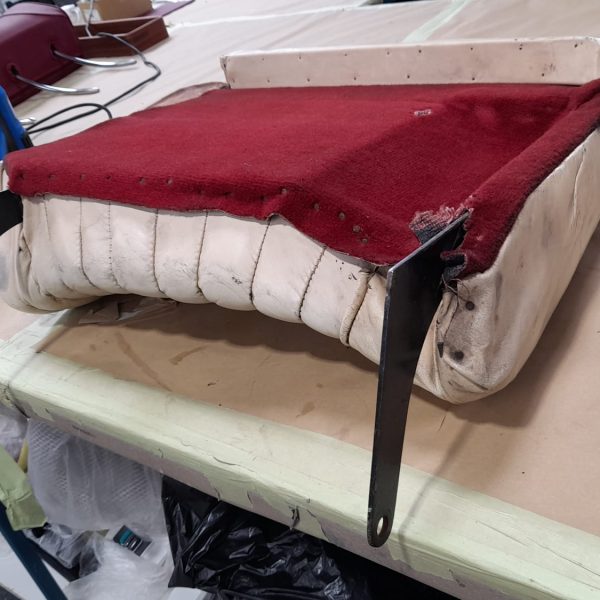

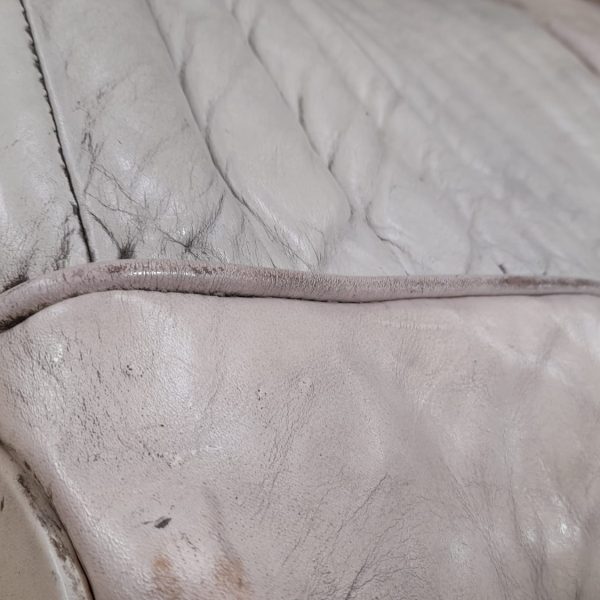
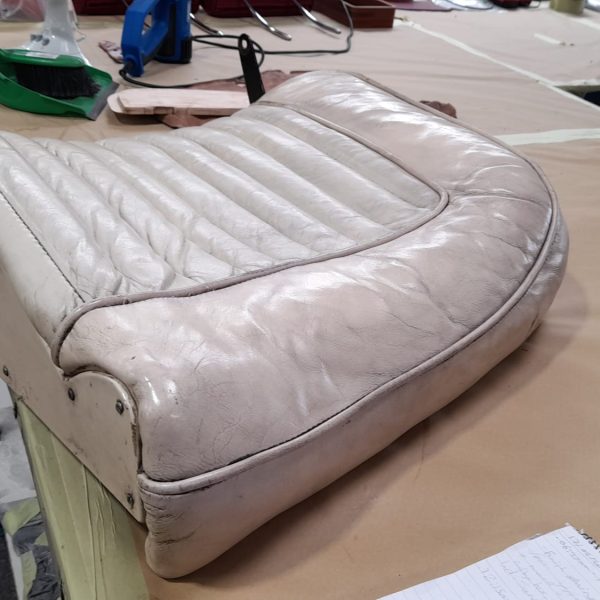
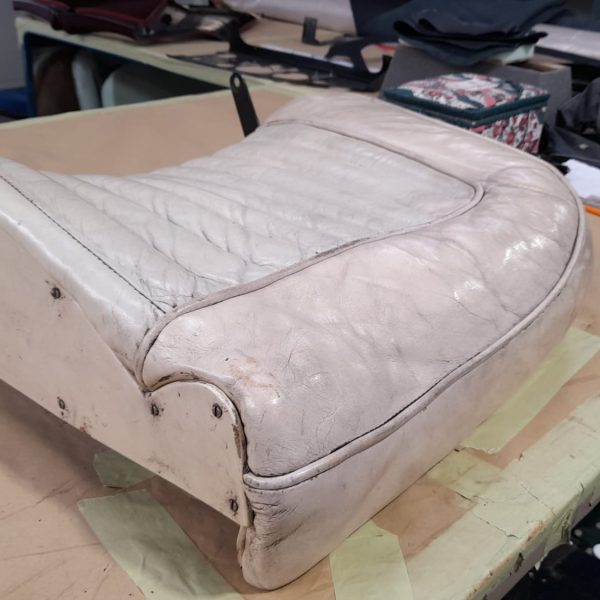
The trim shop at the Bridge Classic Cars Suffolk HQ have been working on repairing the seat base of the 1951 Jaguar XK120 Roadster while at our restoration workshop.
The team have removed the seat base from the car in order to repair the stitching which has come apart. For this, our trimmer Lydia carefully unpicked the sides to remove the cover to restitch it properly and make sure the repair is near enough invisible to keep the originality of the stunning 1950s roadster.


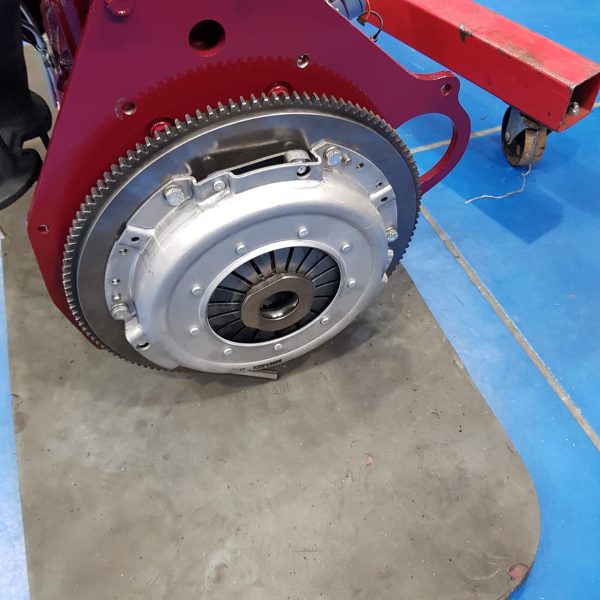
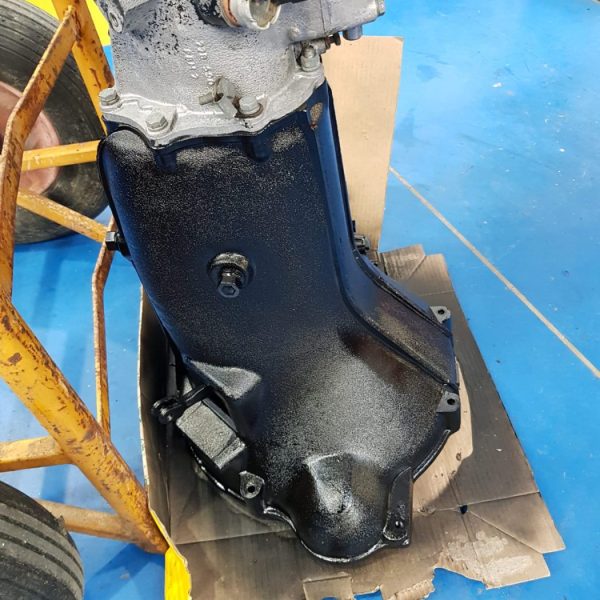

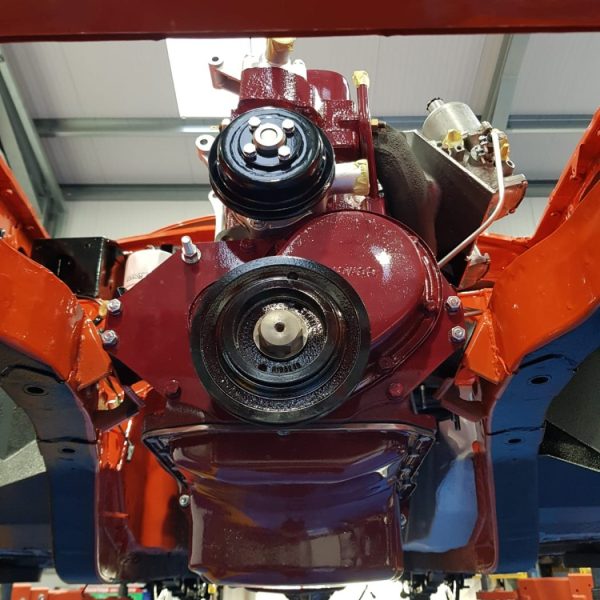
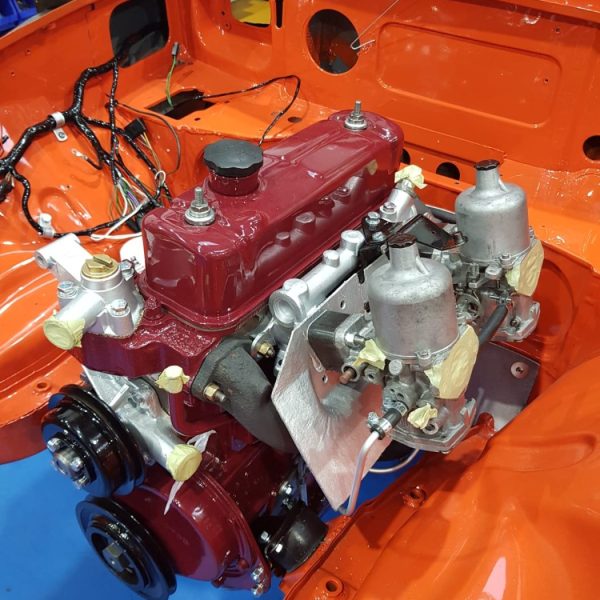
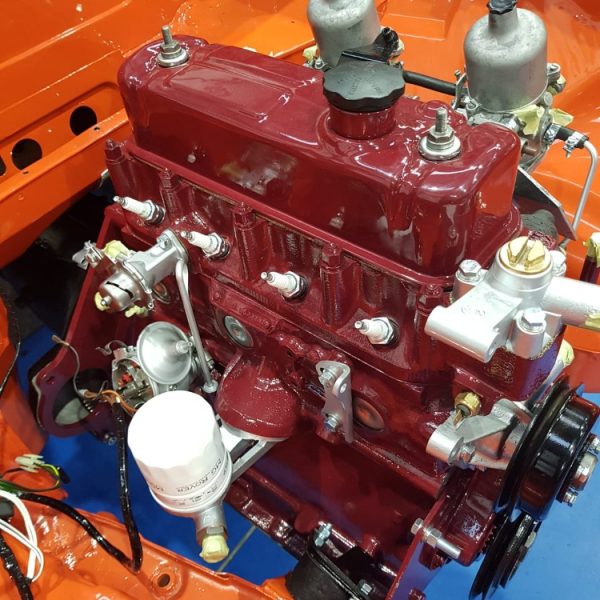
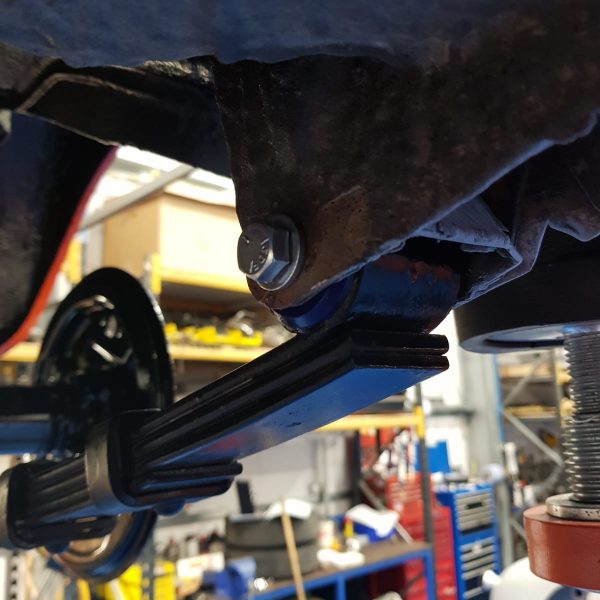
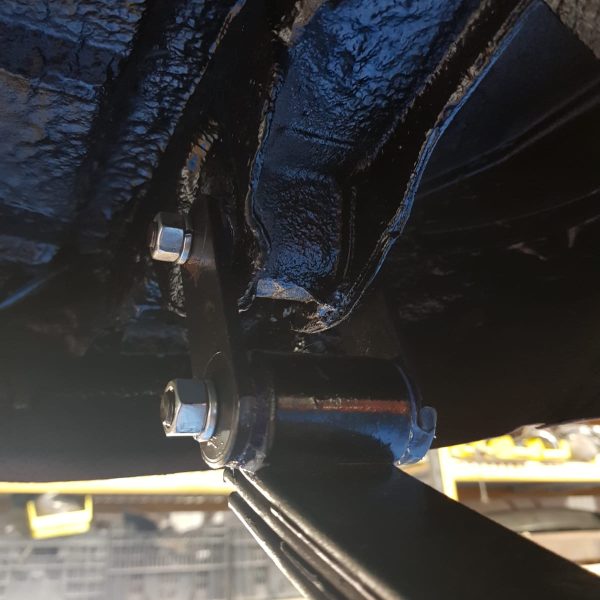
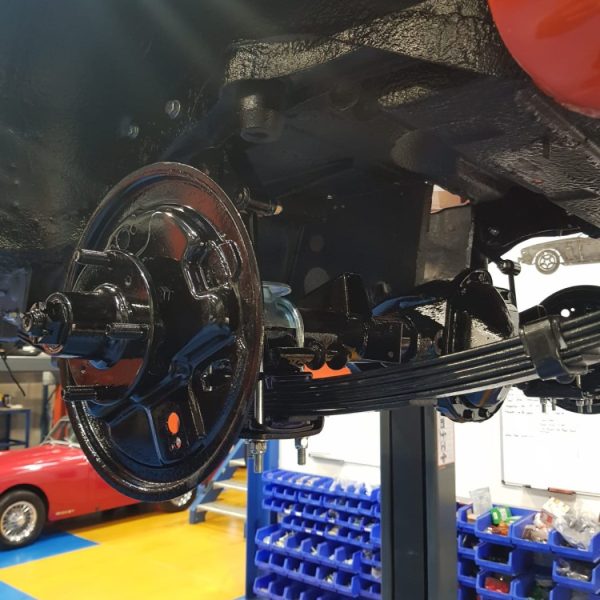
The workshop team at Bridge Classic Cars have been given the delicate task of getting several key pieces of the 1978 MG B GT back into its freshly painted and perfected bodyshell.
Our technician Rob, who has done a lot of the work on the classic 1970s sports car, has been methodically working his way through the task.
To begin with, Rob fitted up the freshly painted rear axle and the leaf springs into place – with new polybushes throughout. The reason for this is not only does it have to go in there at some point, but with the car on the ramp it acts as somewhat of a counterweight to the engine.
With the rear axle in and bolted in, Rob could move to the front end of the car.
The newly refinished engine and gearbox were then hooked up to the engine crane, and inch by inch gingerly dropped into the shimmering blaze orange engine bay. The engine is just placed in at the moment, soon it will be firmly bolted into place after any adjustments that need to be made have been done.
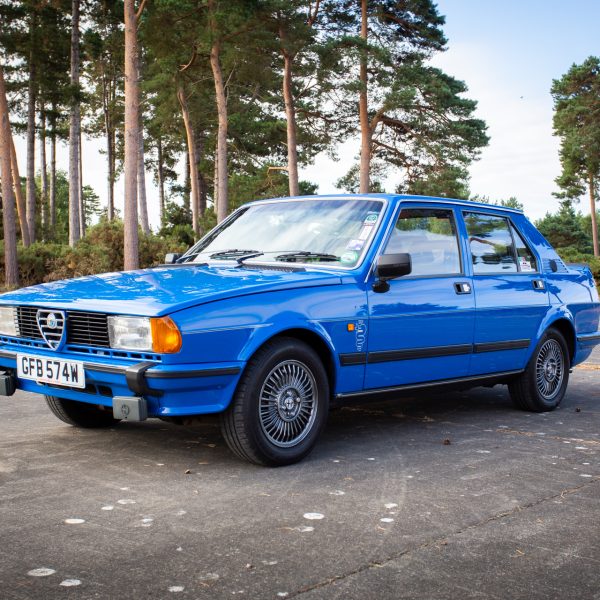

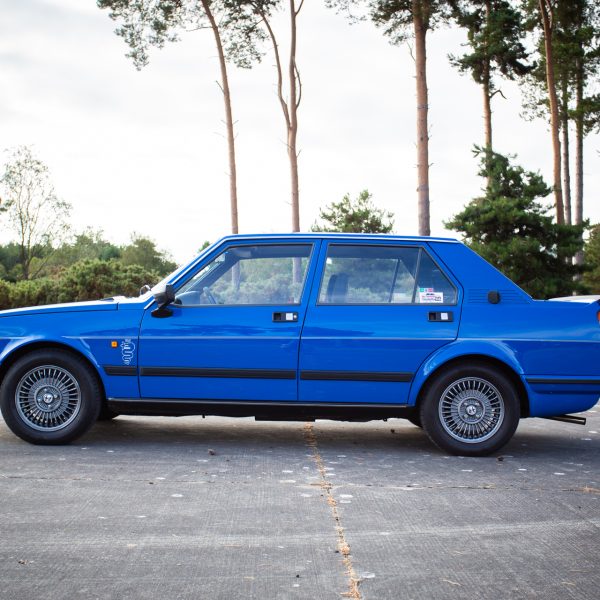

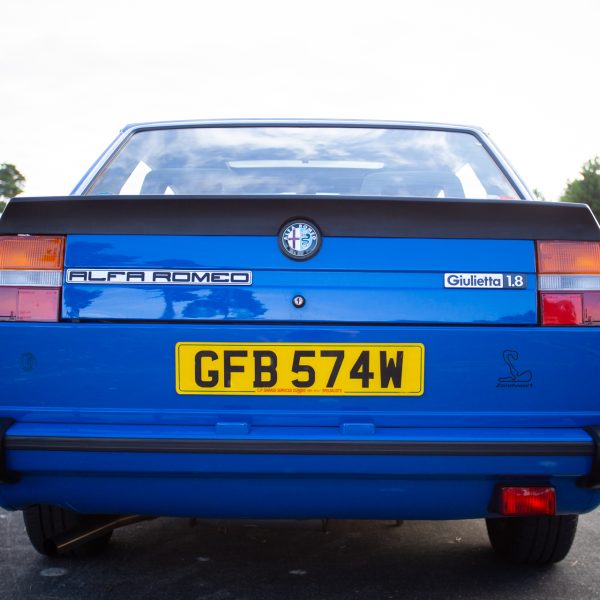
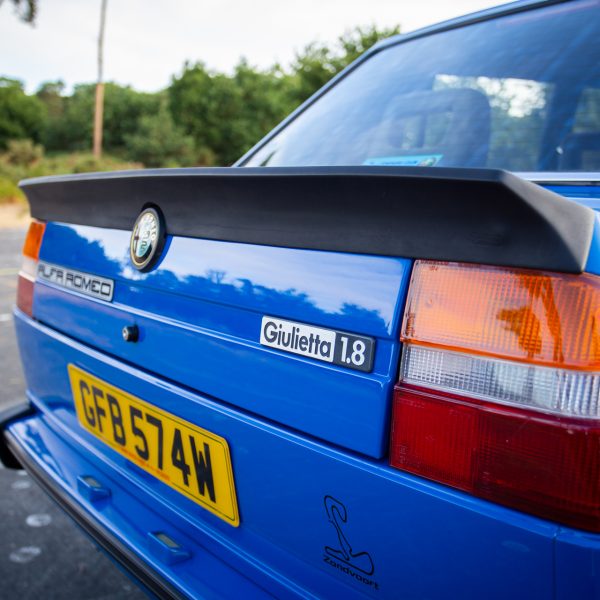
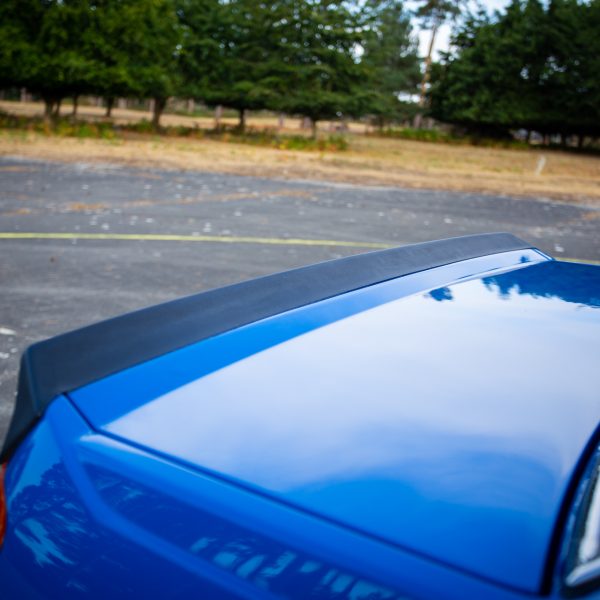


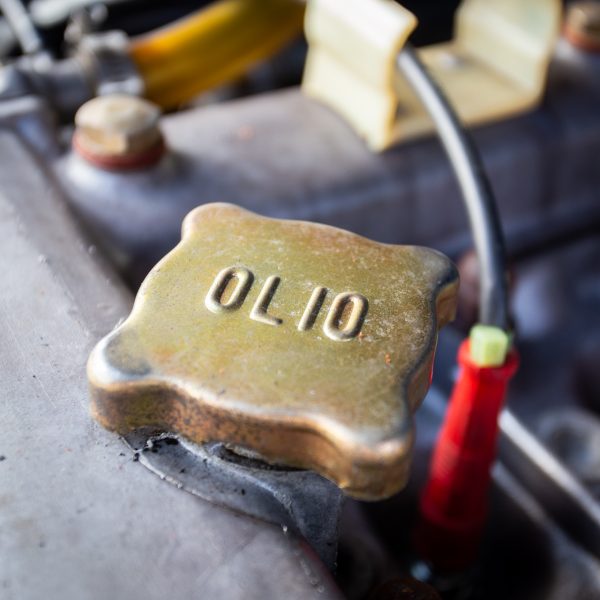

The Alfa Romeo Giulietta – A legendary name in the automotive world for many different reasons. But, one thing the plucky 4-door Italian saloon has done is stand the test of time.
Over three iterations, the name spans nearly 70 years with changes and then-modern influences playing their part in each of the cars.
Where we need to start is more of a question of When. The Giulietta name first appeared in 1954 as it was designated for the beautiful Bertone-designed Tipo 750 and 101’s which personified the aesthetics of La Dolce Vita thanks to its contemporary and flowing design. The Giulietta was available in several variants such as Spider, Coupe and Saloon and proved itself on not just the elegant boulevards and winding roads of the Amalfi Coast but in the towns and cities across Europe. It also won on the racetrack, carrying on the great Alfa Romeo tradition of motorsport. The 4 door saloons – the Berlina’s – proved to be the most popular to buyers. The stunning good looks and practicality meant it ticked a lot of the boxes for potential buyers.
By 1961, the first generation Giuliettas would reach the 100,000 mark. With 39,000 of those being the 4-door Berlinas.
The first generation Giulietta would run until 1965, being phased out by the incoming Giulia which was introduced in 1962.
Over the next 12 years, the Giulietta name would lay dormant in the design offices of Alfa Romeos HQ in Turin. Then, in 1977, the world would be graced with a new radically redesigned iteration.
The Tipo 116 would break cover in 1977. Designed as a ‘small executive saloon’ the Tipo 116 was based on the then-current Alfetta’s underpinnings. Our 1981 Alfa Romeo Giulietta is this generation, the much misunderstood Tipo 116.
The second-generation cars would be based on the then popular ‘three box’ design which would dominate automotive styling from the 1970s to the 1990s. A school of thought that favoured angular, sharp creases but allowed a sense of elegance and purpose.
Powered by the quintessential Alfa Romeo twin-cam 4-cylinder engine, the Giulietta’s were mechanically wonderful. Using the rear-mounted 5-speed Transaxle from the Alfetta, the Giuliettas were well balanced for a front-engined saloon car and in certain environments incredible effective. Outside of Europe, the single largest market for Alfa Romeo was South Africa, where the story of our 1981 Giulietta begins. From 1981 to 1984, the country played host to the production of Giuliettas for their market.
1981, the Tipo 116’s were given an aesthetic update as the markets moved to more flamboyant and excess-driven looks at the dawn of the decade of extremes.
The Tipo 116’s were even more popular than the original cars. Over 360,000 cars would be built when production ended in 1985 before being replaced by the Alfa Romeo 75 (that ran until the early 1990s) which used the majority of the Giulietta/Alfetta engineering.
Then once more, the Giulietta name would be shelved. As it gathered dust in the hallways of the Alfa Romeo archive. Slowly forgotten by all but the groups of enthusiasts who appreciate and understand these often confused cars. But, as the 21st century’s first decade came to a close – the time was right for the name to reappear.
In 2010, the Giulietta name graced the rear hatch of a modern Alfa Romeo. Charged with carrying on the name and modern styling which sits at the core of an Alfa Romeo the Tipo 940 would stay in production until 2020. Being a staple of the Alfa Romeo line-up and help to keep its stake as one of the world’s most formidable auto manufacturers.
What sits at the core of the Giulietta also sits at the core of what it means to be an Alfa Romeo. They develop personalities and dare we say it, even a soul in some ways. They must be understood and cared for in order to be appreciated fully – The most important thing in all of that is to truly understand the car.
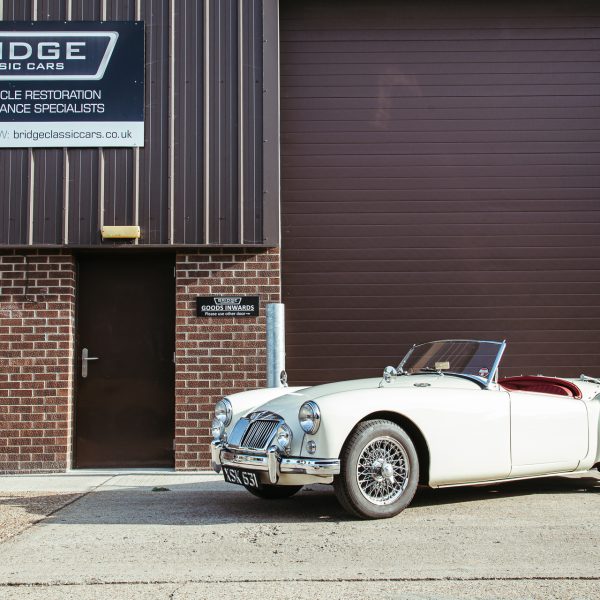
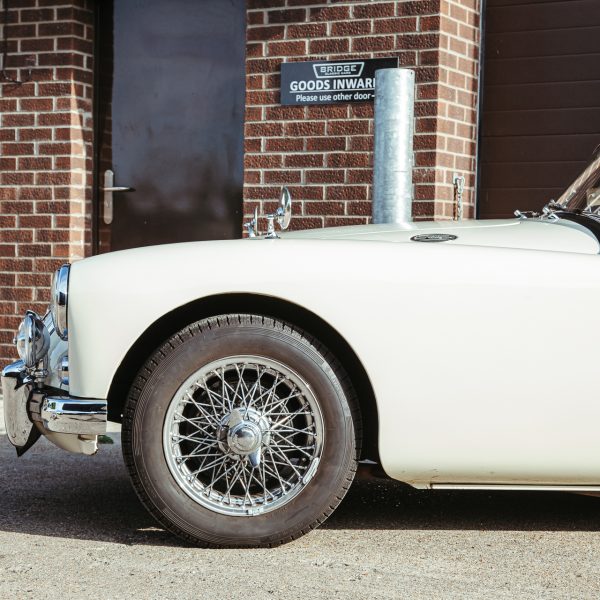
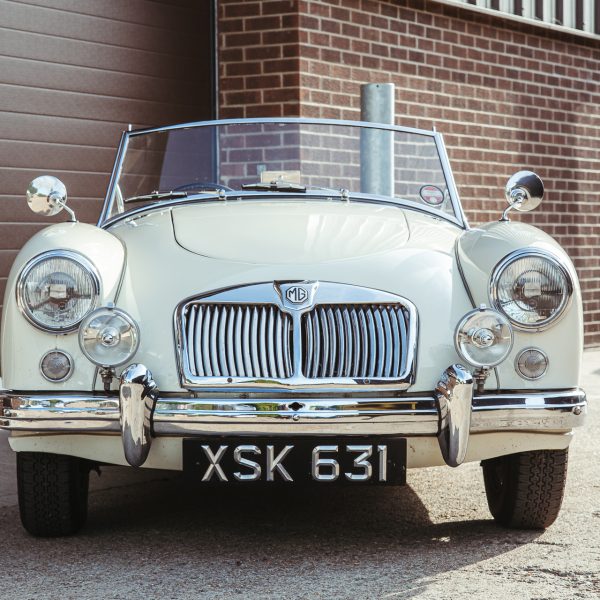
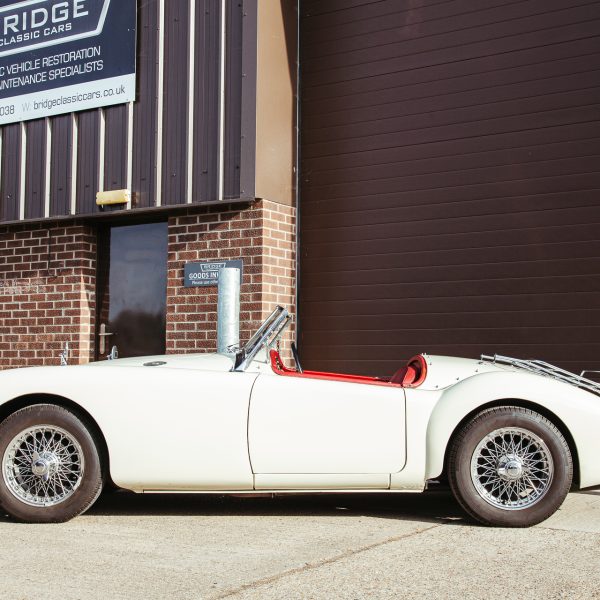
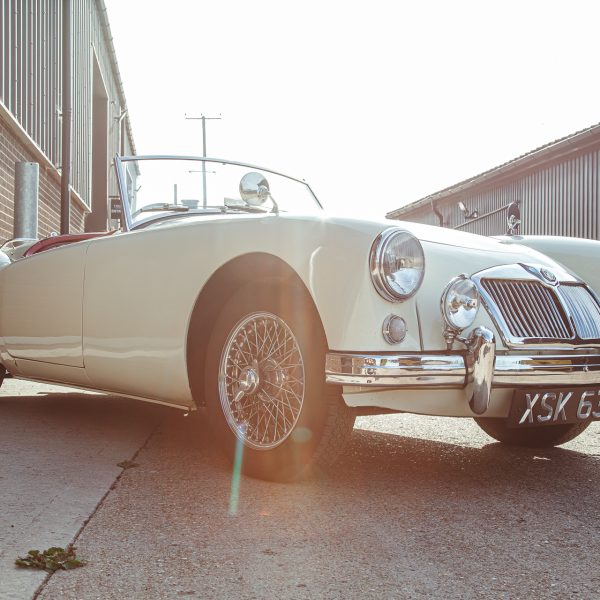
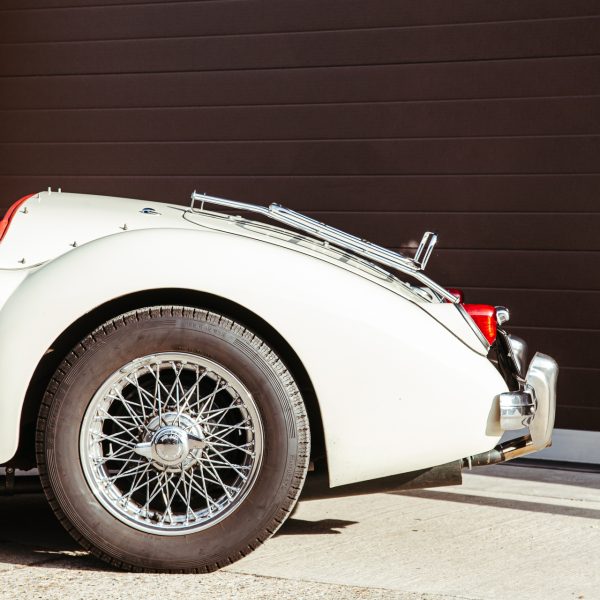

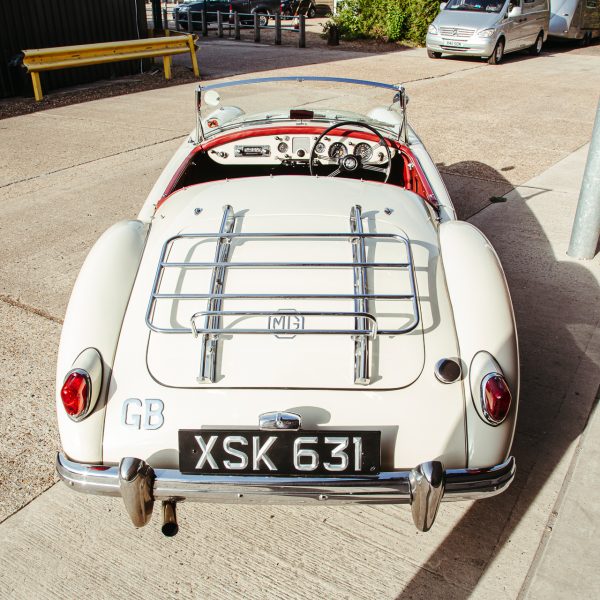
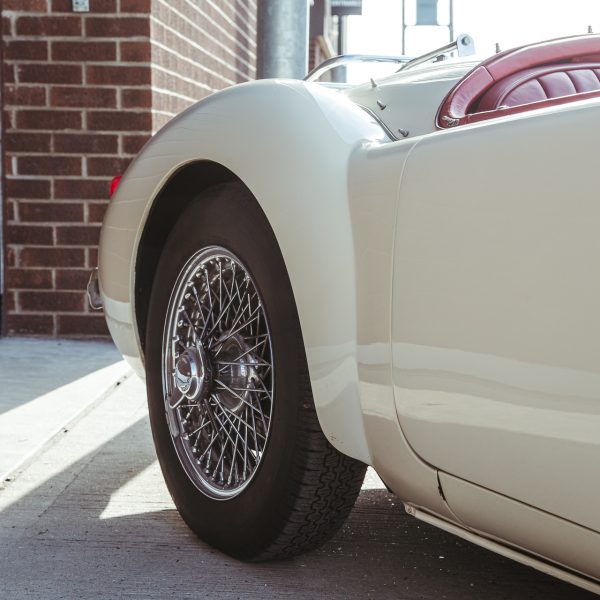
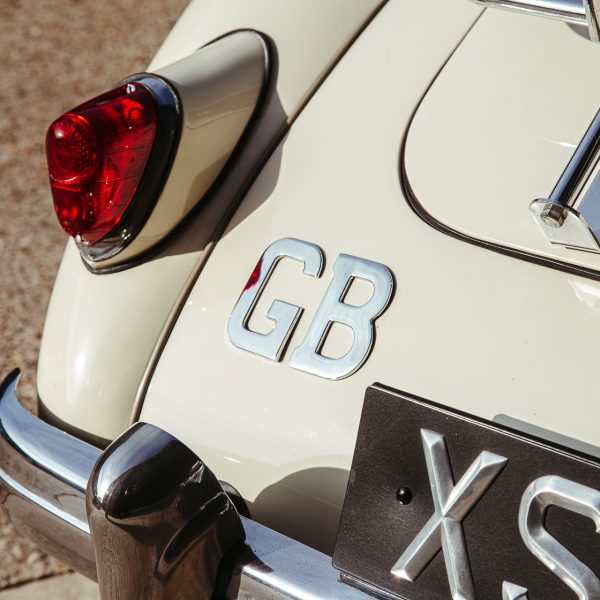
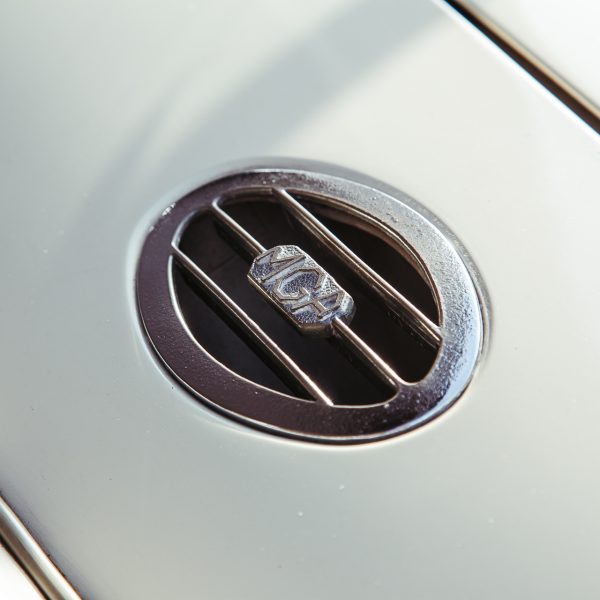
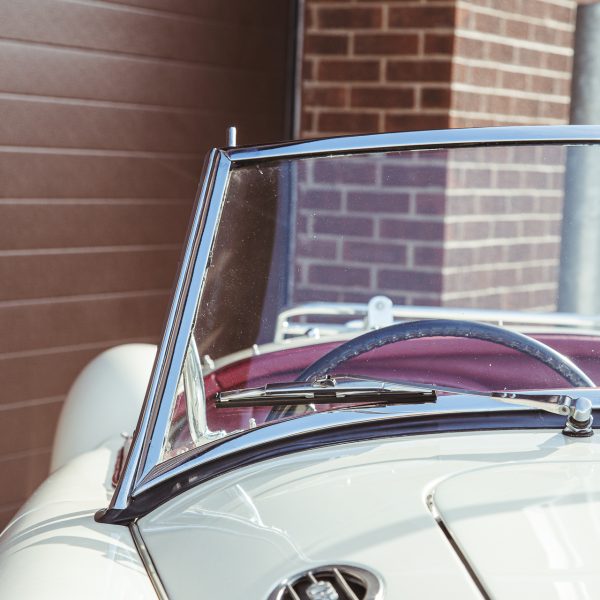
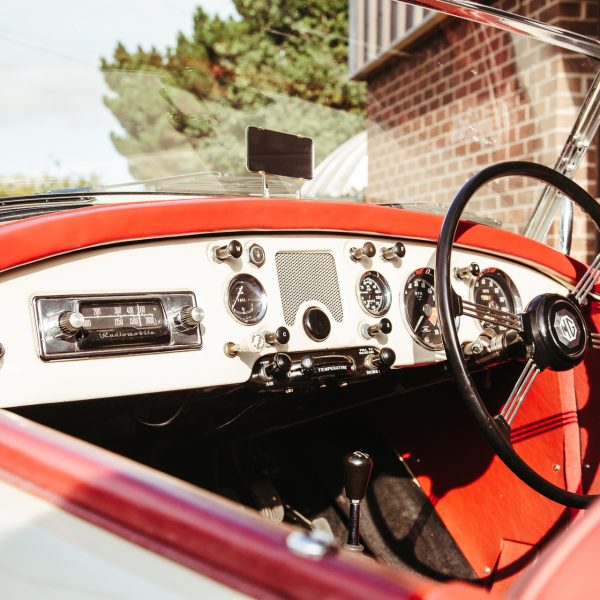

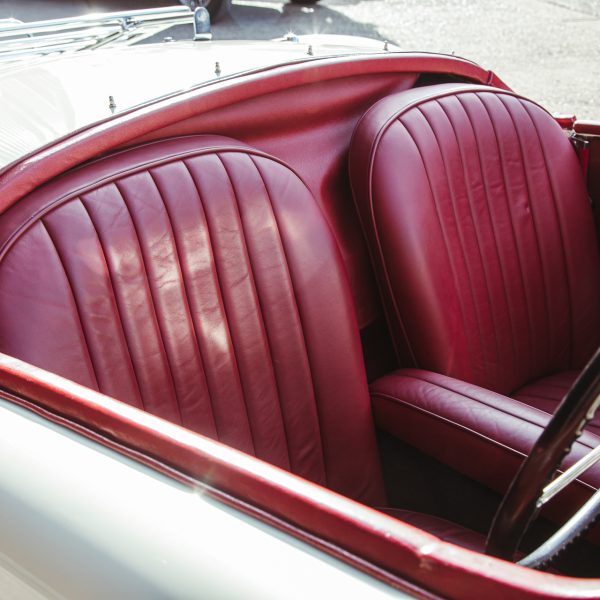
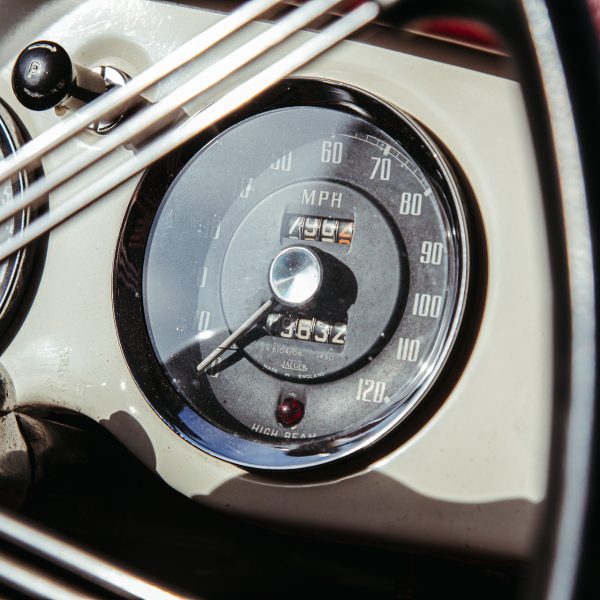
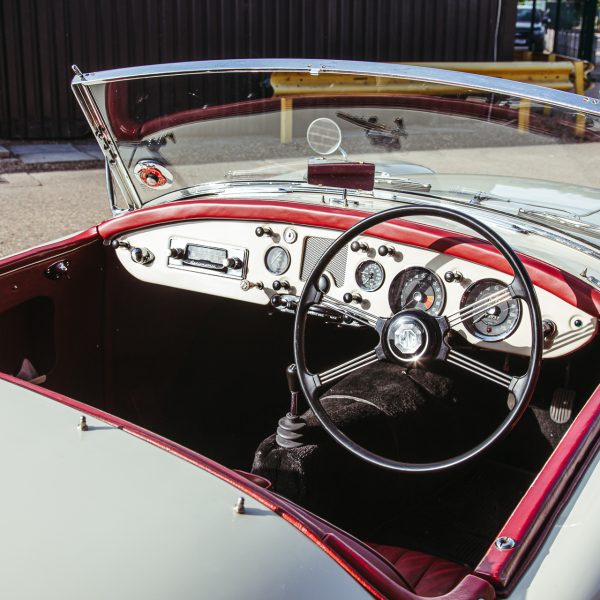
Recently arrived at the Bridge Classic Cars workshops at our Suffolk HQ is this stunning 1957 MG A Roadster.
The car has come in for our team to work on in order to get it running perfectly for its owner. The classic roadster will be completely serviced and inspected while also carrying out an investigation into a harsh/rough ride the owner has reported to the team.
Keep a look out for more updates soon on the 1957 MG A Roadster here on the Bridge Classic Cars news page.
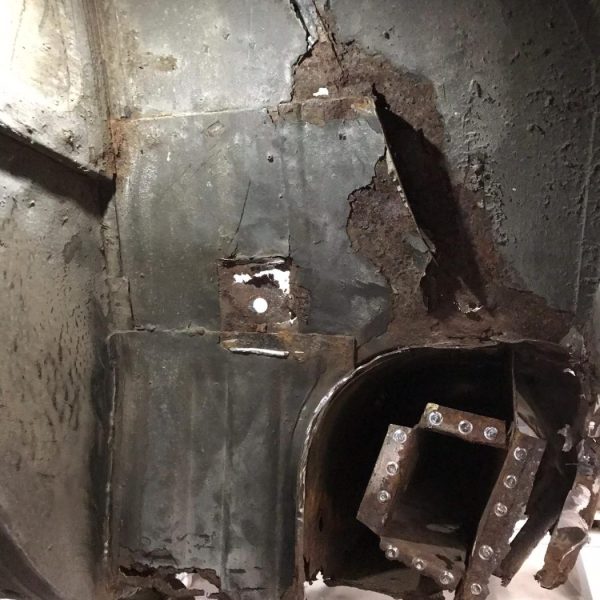
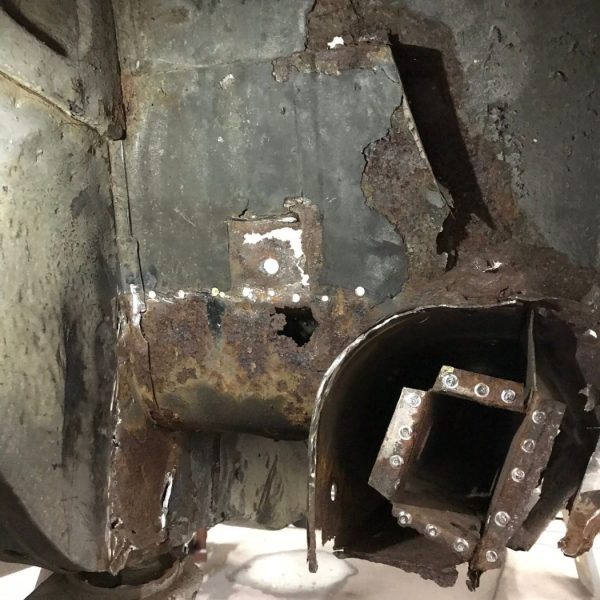
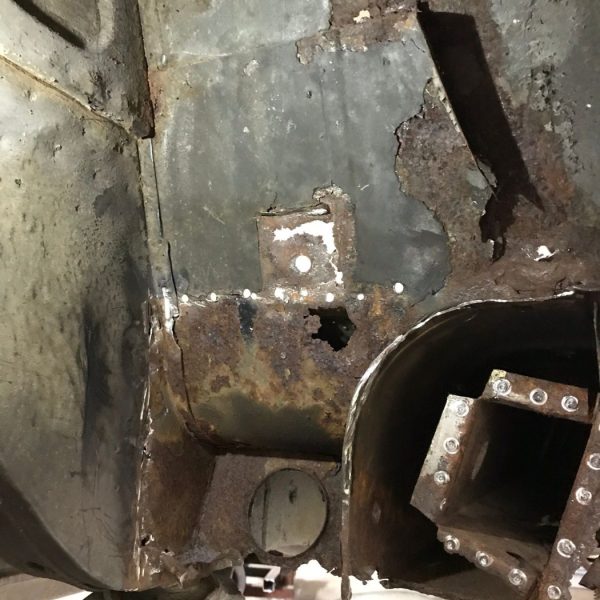


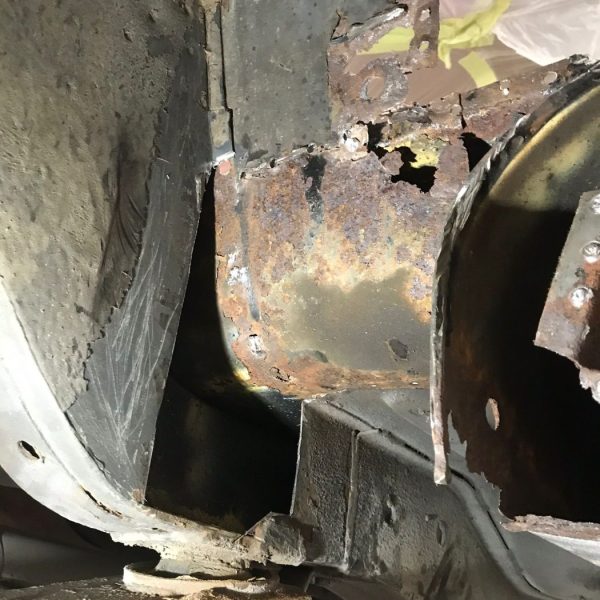


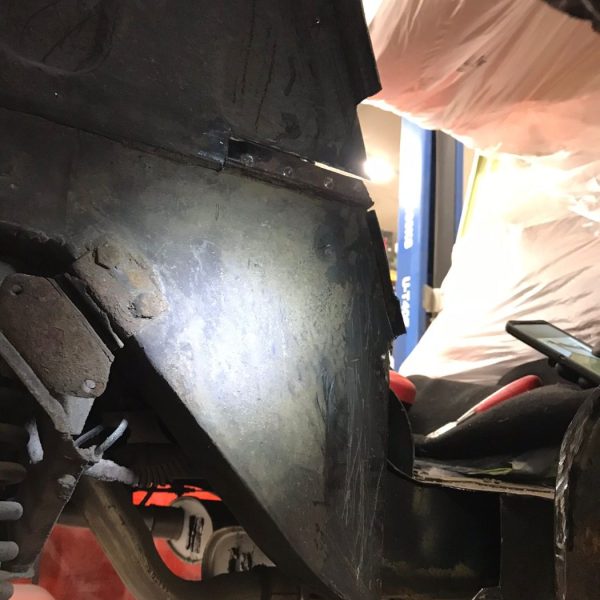
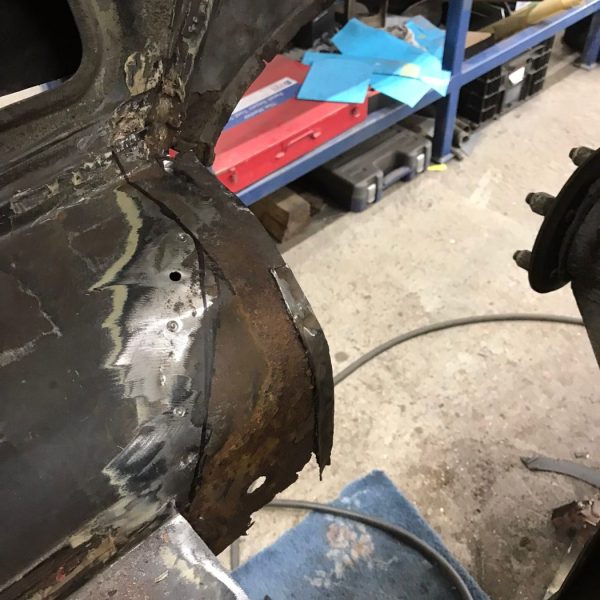

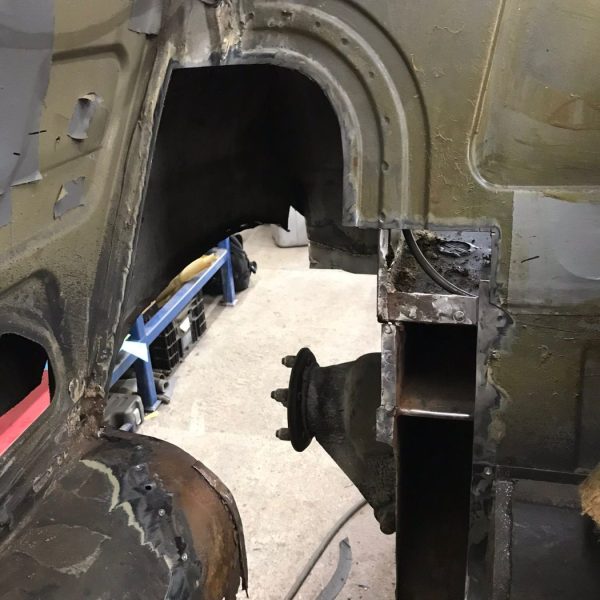

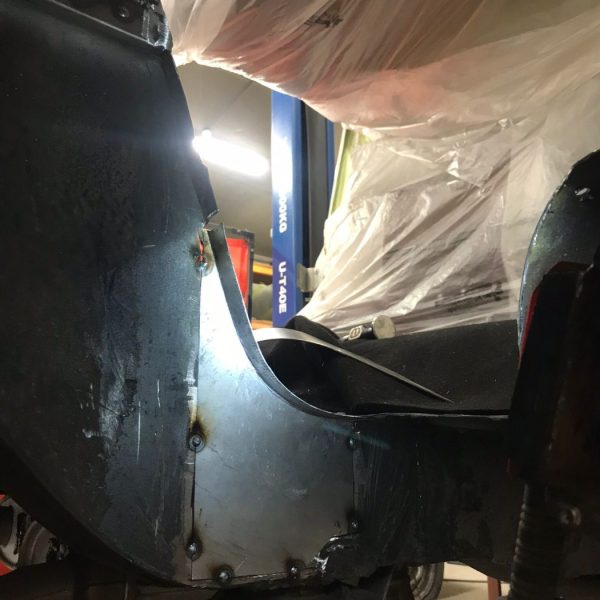
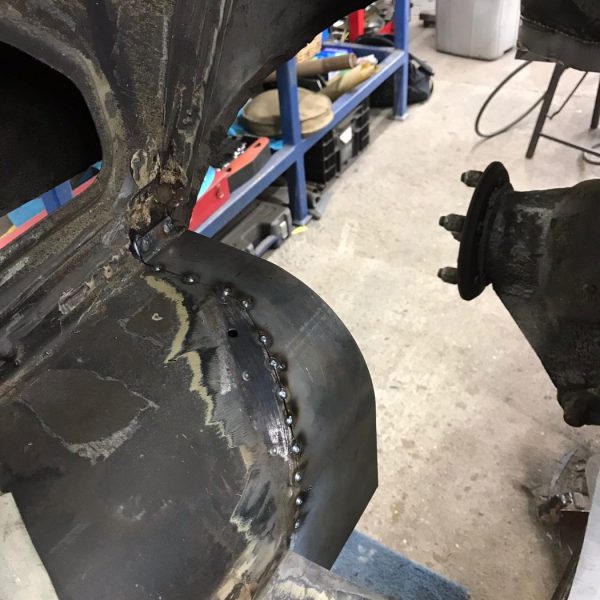

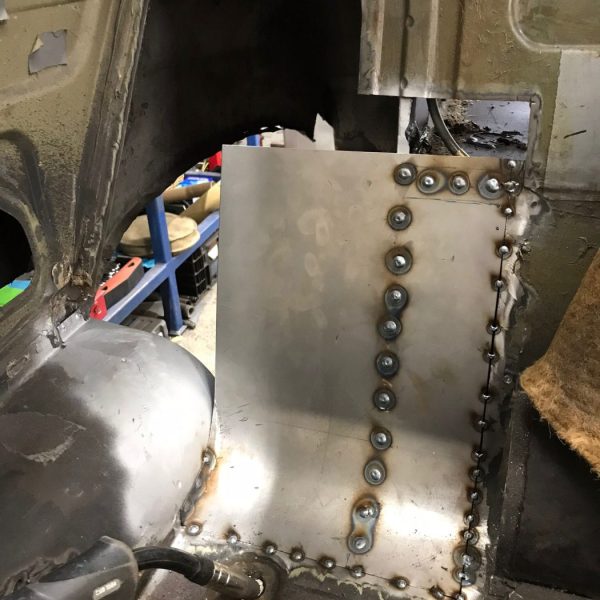

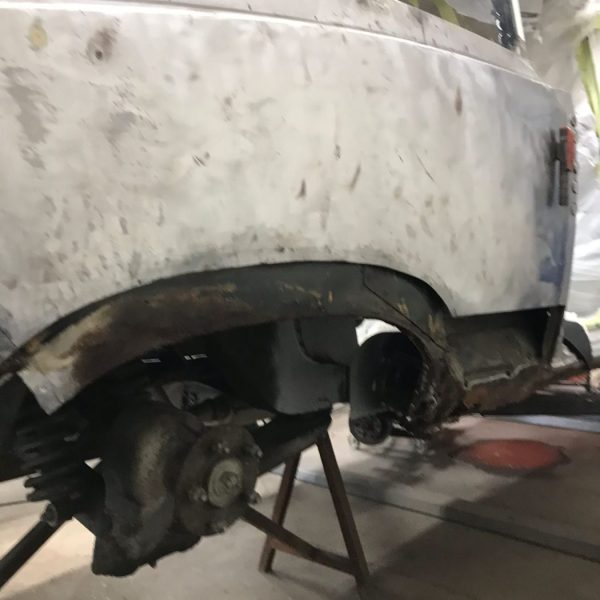

The fabrication team at the Bridge Classic Cars Suffolk HQ have been busy working on repairing the inner and outer wheel arch on the 1986 Daimler DS420.
The team have uncovered areas of heavy corrosion in the lower parts of the classic Daimler. These are being systematically cut out of the car and replaced with new handmade patch panels, including the rear arches.
The team have thoroughly inspected any areas of corrosion and removed any affected material to bring it back to clean, strong metal to work from. From there, the team have made up the individual pieces needed to recreate the missing parts. Each of these is then carefully tacked into place to avoid warping certain areas and then finish welded.
Bridge Classic Cars are award winning Classic Car Restoration and Maintenance specialists. Your pride and joy is in safe hands with our expert Classic Car Technicians. Take a look at our awards here.
We use cookies to deliver the best possible experience whilst visiting our website. By clicking "Accept All", you consent to our use of cookies, or you can manage your preferences by clicking the link below. You can manage your preferences at any time from out Cookie Policy page.